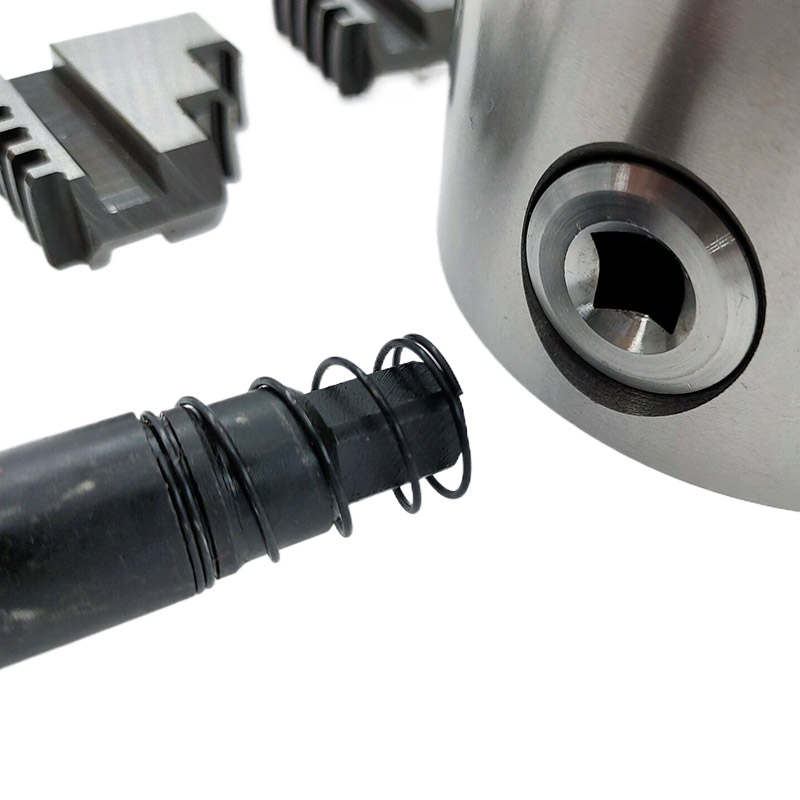
Power of Metal Lathes: Metal Lathe Projects
Introduction
In the realm of metalworking, metal lathes stand as indispensable tools, capable of transforming raw metal blocks into intricate and functional components. Whether you’re a seasoned machinist or an aspiring metalworker, metal lathe projects offer an avenue to unleash creativity, hone skills, and produce valuable items for various applications in 2024.
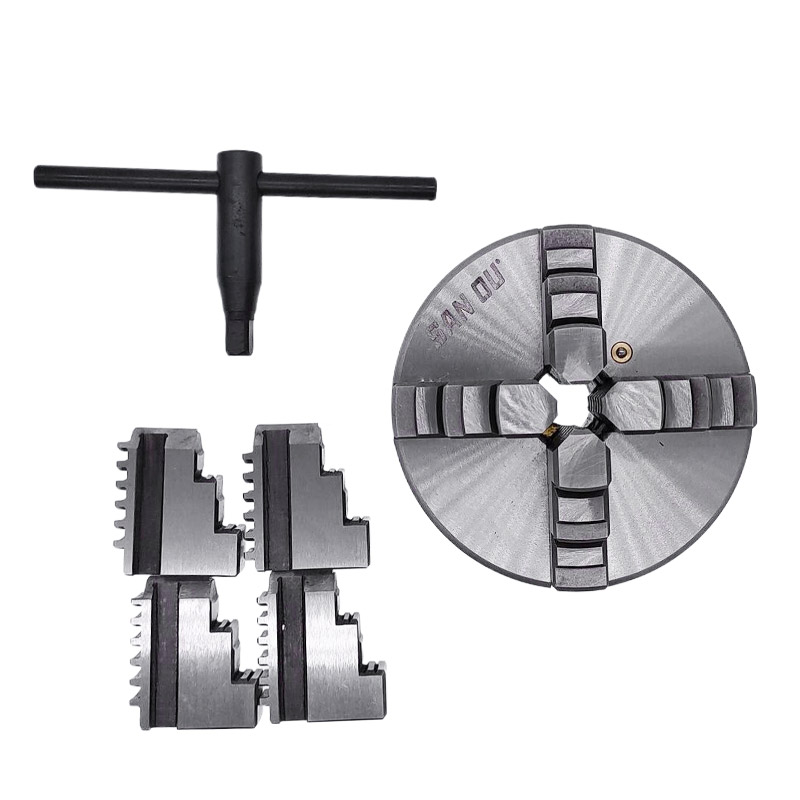
Understanding Creative Metal Lathe Projects and Their Capabilities
Metal lathes are machines that rotate a metal workpiece, allowing a cutting tool to shape it into desired forms. They primarily function to create cylindrical or conical shapes, with the ability to perform various operations, including:
-
Turning: Removing material from the workpiece to create a smooth, rounded surface.
-
Facing: Flattening the end of a workpiece perpendicular to its axis.
-
Boring: Enlarging an existing hole or creating a new one within the workpiece.
-
Threading: Cutting helical grooves onto the workpiece to create a screw-like pattern.
-
Parting: Separating a workpiece into two distinct pieces along a defined line.
Essential Metal Lathe Tools and Accessories
To embark on your metal lathe projects, you’ll need a basic set of tools and accessories:
-
Three-Jaw Chuck: A versatile chuck for securing round workpieces of various sizes.
-
Four-Jaw Chuck: Ideal for holding irregularly shaped workpieces or those requiring more precise alignment.
-
Cutting Tools: A variety of high-speed steel (HSS) or carbide cutting tools for different turning, facing, boring, threading, and parting operations.
-
Tool Rest: A support for the cutting tool, ensuring precise control and stability during operation.
-
Measuring Tools: Calipers, micrometers, and gauges for accurate measurement and dimension control.
-
Safety Gear: Protective glasses, gloves, and a dust mask to safeguard yourself from hazards.
Types of Metal Lathes and Their Applications
Metal lathes come in various types, each suited for specific purposes:
-
Engine Lathes: The most common type, offering a versatile range of operations and suitable for both beginner and advanced projects.
-
Mini Lathes: Compact and portable, ideal for small-scale projects and hobbyists with limited workspace.
-
CNC Lathes: Computer Numerical Control (CNC) lathes provide high precision and automation for complex projects and mass production.
Choosing the Right Metal Lathe Project
When selecting a metal lathe project, consider your skill level, available tools, and desired outcome. Start with simple projects like bushings or spacers to gain confidence, then progress to more complex tasks like threading or gear cutting.
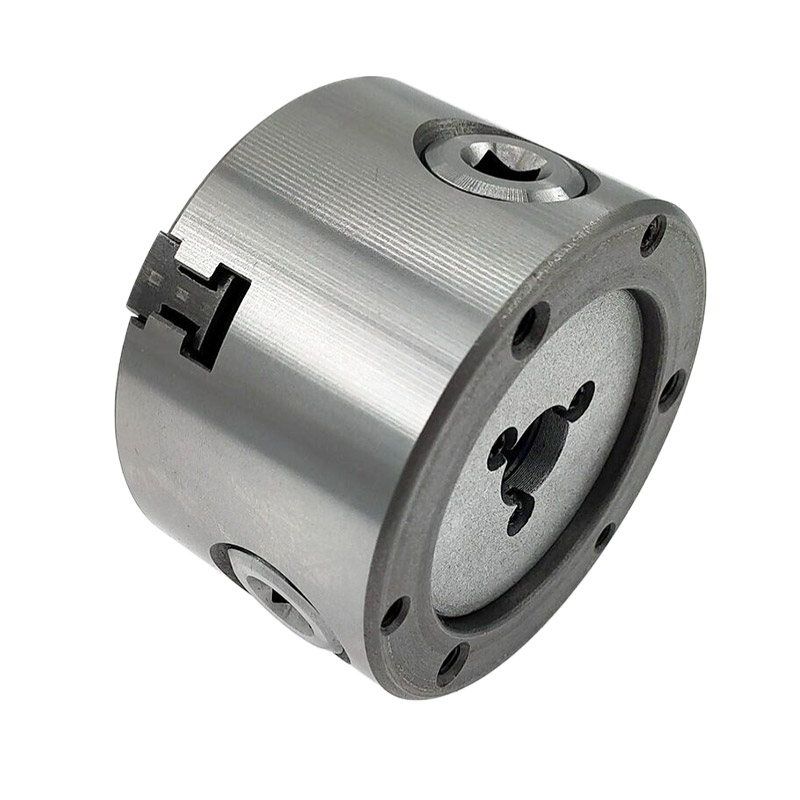
Safety Guidelines for Metal Lathe Operations
Safety is paramount when working on a metal lathe. Always follow these guidelines:
-
Secure the workpiece: Ensure the workpiece is firmly mounted in the chuck or between centers to prevent accidents.
-
Maintain proper posture: Stand with a balanced stance, knees slightly bent, and keep your hands away from rotating parts.
-
Wear appropriate PPE: Use protective glasses, gloves, and a dust mask to shield yourself from hazards.
-
Never operate the lathe while impaired: Avoid operating the lathe while under the influence of alcohol or drugs.
-
Stay alert and focused: Maintain full attention on the task at hand and avoid distractions while operating the lathe.
Basic Metal Lathe Operations for Beginners
Start with these fundamental metal lathe operations to master the basics:
-
Rough Turning: Initial shaping of the workpiece to remove excess material and establish the desired form.
-
Smoothing: Refining the surface of the workpiece to eliminate irregularities and achieve a smooth finish.
-
Detailing: Adding intricate details, such as grooves, ridges, or decorative elements, to enhance the appearance.
-
Polishing: Using abrasive compounds and polishing wheels to achieve a shiny, mirror-like finish.
Intermediate Metal Lathe Projects to Elevate Your Skills
Once you’ve mastered the basics, venture into these intermediate projects:
-
Creating a Bolt: Combine turning, facing, and threading operations to produce a functional bolt.
-
Turning a Sleeve: Shape a precise sleeve with a smooth bore and outer diameter.
-
Cutting a Taper: Learn the technique of creating a tapered form on the workpiece.
-
Making a Tool Holder: Turn a custom tool holder to organize and securely store your lathe tools.
Advanced Metal Lathe Projects for Experienced Machinists
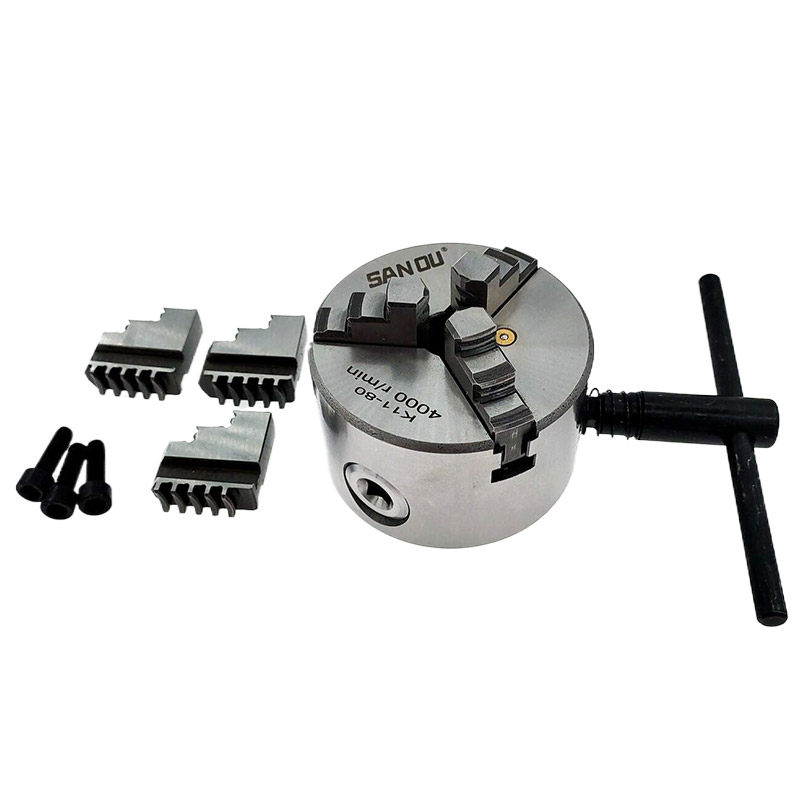
For experienced machinists, these projects offer a challenge:
-
Turning a Gear: Produce a functional gear with precise teeth and accurate dimensions.
-
Machining a Knuckle Joint: Create a complex knuckle joint with multiple moving parts and intricate details.
-
Threading a Pipe Fitting: Master the process of threading a pipe fitting for plumbing applications.
- Making a Custom Lathe Chuck: Design and turn a custom lathe chuck for specific workpiece holding needs.
Maintaining Your Metal Lathe for Optimal Performance
Just like any tool, proper care is crucial to ensure your metal lathe’s longevity and optimal performance. Here are some maintenance practices:
- Cleaning and Lubrication: Regularly clean your lathe to remove metal chips, dust buildup, and coolant residue. Follow the manufacturer’s instructions for lubricating moving parts to prevent friction and wear.
- Sharpening Cutting Tools: Maintain sharp cutting tools for efficient and clean cuts. Learn how to sharpen your HSS or carbide tools using appropriate sharpening stones or invest in a sharpening jig.
- Tool Maintenance: Regularly inspect your cutting tools for damage, such as chipped edges or worn tips. Replace or recondition damaged tools to ensure proper operation and safety.
- Coolant System Maintenance: If your lathe utilizes a coolant system, maintain proper coolant levels and cleanliness to prevent overheating and extend tool life.
Advanced Safety Techniques for Experienced Metalworkers
As you progress in your metal lathe projects, consider incorporating these advanced safety techniques:

- Using Live Centers and Dead Centers: Learn the proper use of live centers and dead centers for longer workpieces and ensuring precise alignment during turning operations.
- Cutting Speeds and Feeds: Understand the concept of cutting speeds and feeds, selecting appropriate settings based on the material being machined and the desired outcome.
- Advanced Workholding Techniques: With experience, explore advanced workholding techniques like chucking techniques, using centers, and mandrels for specific workpiece shapes.
- Chip Control: Implement strategies for safe and efficient chip control to prevent chip accumulation in the work area and potential injuries.
The Basics of Metal Lathe Operations
Before delving into specific projects, it’s essential to understand the fundamentals of operating a metal lathe. A metal lathe is a machine tool used to shape metal, wood, or other materials by rotating the workpiece against cutting tools. The lathe’s spindle holds the workpiece, while various tools, such as cutting tools and drill bits, are used to shape and refine it. Mastery of lathe operations involves understanding spindle speed, feed rates, tool selection, and precise measurements—a blend of artistry and technical proficiency.
Crafting Precision Components: Turning and Facing
One of the most fundamental projects on a metal lathe is turning and facing. Turning involves rotating a cylindrical workpiece against a stationary cutting tool to create cylindrical shapes, such as shafts or pins. Facing, on the other hand, is the process of cutting a flat surface perpendicular to the axis of rotation. These techniques are foundational in machining and are essential for creating precise components used in various industries, from automotive to aerospace.
Creating Threads: Tapping into Functional Precision
Threads are integral to many mechanical assemblies, providing the means to secure parts together or adjust components. Metal lathes are indispensable for cutting threads, whether external or internal, using threading tools and dies. Projects involving thread cutting showcase the lathe’s ability to achieve high accuracy and repeatability, crucial for manufacturing threaded parts like bolts, nuts, and threaded rods.
Precision Boring: Enhancing Fit and Function
Boring operations on a metal lathe involve enlarging existing holes or creating precise internal diameters. This technique is vital for achieving accurate fits in mechanical assemblies, where tolerances are critical. Boring tools, such as single-point cutters or boring bars, allow machinists to achieve smooth, concentric bores that meet exact specifications. Projects involving boring highlight the lathe’s capability to refine and enhance the functionality of machined parts.
Turning Complex Shapes: From Cones to Eccentrics
Beyond simple cylindrical shapes, metal lathes excel at turning complex geometries, such as cones, spheres, and eccentric shafts. These projects require advanced techniques, including taper turning and eccentric turning, which involve adjusting the lathe’s setup to achieve non-linear profiles or varying diameters along the workpiece. Such projects not only demonstrate the lathe’s versatility but also challenge machinists to hone their skills in geometrical precision and creative problem-solving.
Restoring Vintage Machinery: Preserving Heritage with Precision
Restoration projects involving vintage machinery showcase the ultimate fusion of craftsmanship and historical preservation. Metal lathes play a crucial role in restoring worn or damaged parts of antique engines, tools, or industrial equipment. Machinists meticulously replicate original components, ensuring historical accuracy while rejuvenating functionality. These projects highlight the enduring value of metal lathes in maintaining and honoring industrial heritage.
Custom Tooling: Tailoring Solutions for Specific Needs
In many manufacturing settings, custom tooling is essential for optimizing production processes and overcoming unique challenges. Metal lathes empower machinists to fabricate custom tools, jigs, and fixtures tailored to specific manufacturing requirements. Whether it’s designing precision gauges, cutting tools, or production molds, the ability to create bespoke tooling enhances efficiency and quality in industrial applications. These projects underscore the adaptability and innovation facilitated by metal lathe technology.
Artistic Expressions: Sculpting Metal with Precision
Metalworking is not solely confined to functional components; it is also a form of artistic expression. Artists and craftsmen utilize metal lathes to sculpt intricate designs, decorative elements, and artistic forms from metal. These projects transcend traditional machining techniques, blending technical skill with creative vision to produce aesthetically pleasing and culturally significant artworks. Metal lathe artistry exemplifies the fusion of craftsmanship, innovation, and artistic ingenuity.
The Future of Metal Lathe Technology
The realm of metal lathe technology is constantly evolving, offering exciting advancements for machinists of all levels. Here’s a glimpse into what the future holds:
-
CNC Lathes with Advanced Functions: CNC lathes with even more sophisticated programming capabilities will enable complex machining with increased precision and automation.
-
Advanced Tooling Materials: New cutting tool materials with extended life and improved performance will enhance efficiency and reduce production costs.
-
Automated Safety Features: Lathes may incorporate advanced safety features like automatic shut-off mechanisms, chip ejection systems, and laser alignment tools.
-
Integration with 3D Printing: Potential integration with 3D printing technologies could offer new possibilities for rapid prototyping and hybrid manufacturing processes.
These advancements point towards a future where metal lathes become even more versatile, efficient, and safe, empowering machinists to bring their creations to life with unparalleled accuracy and sophistication.


When were chainsaws invented
The chainsaw in 2004, a tool evokes images of lumberjacks, construction workers, and even horror movie villains, has a surprisingly rich and when were chainsaws invented. Its journey from medical origins to its current status as an indispensable tool in various industries is a testament to human ingenuity and the power of technology to transform our world.
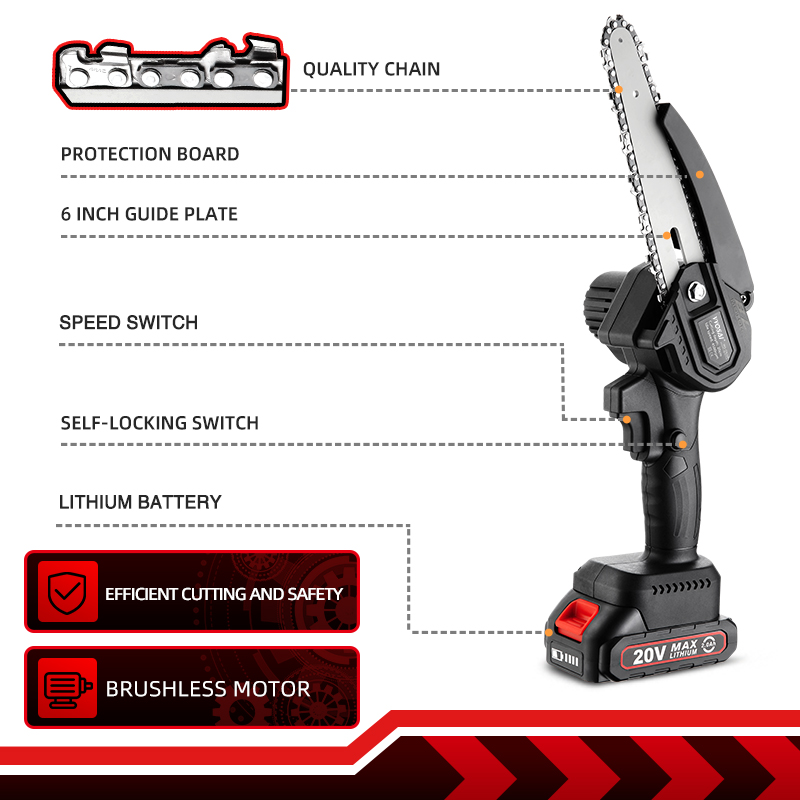
What Year were Chainsaws Invented/When were chainsaws invented
Chainsaws, now ubiquitous in forestry and construction, have a surprisingly ancient origin. When were chainsaws invented? The first concept of a chainsaw dates back to the late 18th century, with early prototypes designed for medical purposes. It wasn’t until the 19th century that the chainsaw began to evolve into a tool for more practical applications.
When were chainsaws invented ?In the 1830s, a German orthopedist named Bernhard Heine developed a chainsaw-like tool for cutting bone, which was operated manually. The first chainsaw made laid the groundwork for the chainsaw’s future development as a cutting tool. However, it wasn’t until the 20th century that chainsaws started to resemble the modern devices we recognize today.
What Were Chainsaws Originally Made For in Industry
When were chainsaws invented? The earliest recorded patent for this can be considered a modern chainsaw was filed by the German mechanical engineer Andreas Stihl in 1926. Stihl’s invention marked a significant advancement in chainsaw technology, as it featured a gasoline-powered engine and a chain with cutting teeth.
Their efficiency and speed compared to manual saws made them invaluable tools in the logging industry. Chainsaws quickly gained popularity in Europe and North America during the mid-20th century as logging operations expanded to meet the growing demand for wood products.
When Were Chainsaws Popularized
The widespread adoption of chainsaws occurred post-World War II, driven by advancements in engine technology and manufacturing processes. When were chainsaws invented and popular? During the 1950s and 1960s, chainsaws became more affordable and accessible to both professionals and hobbyists. Manufacturers such as Husqvarna, McCulloch, and Poulan emerged during this period, further fueling the chainsaw’s popularity.
Chainsaws also found applications beyond forestry and logging. They became essential tools in construction, landscaping, and even rescue operations. Their versatility in cutting through various materials, from wood to metal, contributed to their widespread use across different industries.

Environmental and Safety Considerations
As chainsaws became more prevalent, concerns arose regarding their environmental impact and safety. The noise pollution generated by chainsaws, coupled with emissions from gasoline engines, prompted regulatory agencies to introduce stricter guidelines for their use. Additionally, safety features such as chain brakes, anti-vibration systems, and protective clothing became standard to reduce the risk of accidents and injuries.
Despite these challenges, chainsaws remained indispensable in modern industry and continue to evolve with technological advancements. Electric chainsaws, powered by batteries or connected to power sources, have gained popularity due to their quieter operation and reduced emissions. These innovations reflect ongoing efforts to mitigate the environmental impact of chainsaw use while maintaining their utility.

Modern Applications and Innovations
In the 21st century, chainsaws have continued to evolve with advancements in materials, ergonomics, and safety features. Modern chainsaws are lighter, more ergonomic, and equipped with smart technologies that enhance efficiency and user safety. For example, some models feature automatic chain lubrication systems and digital controls for optimal performance.
Furthermore, the advent of robotic and automated chainsaws has revolutionized certain industries, such as forestry and agriculture. These machines can operate autonomously to fell trees, prune orchards, and perform other tasks with precision and efficiency. Robotics in chainsaw technology not only increases productivity but also reduces human labor and associated risks.
From Surgical Precision to Timber Industry Might
The chainsaw‘s origins can be traced back to the late 18th century in Scotland. While the Aitken-Jeffray chainsaw marked an early step in medical innovation, its use was not without controversy, raising ethical concerns about the potential harm to mothers and infants.
Despite the ethical debate surrounding its medical applications, the chainsaw’s potential found a new home in the timber industry. In the early 20th century, inventors like James Shand, Andreas Stihl, and Emil Lerp began developing portable chainsaws powered by electricity and gasoline. These advancements transformed the logging industry, dramatically increasing efficiency and safety compared to traditional manual methods. The introduction of chainsaws into forestry marked a turning point, allowing for faster and more controlled tree felling and timber harvesting.
World War II, American Ingenuity, and Post-War Advancements
The outbreak of World War II disrupted the supply of German-made chainsaws to North America, creating an opportunity for American manufacturers to step in. Companies like McCulloch and Poulan emerged, further refining chainsaw technology and introducing gasoline-powered models that offered greater power and portability. These advancements propelled the chainsaw into widespread use, not only in forestry but also in construction, landscaping, and even rescue operations.

The post-war era saw continued advancements in chainsaw design and performance. Engineers focused on improving engine efficiency, reducing weight, and enhancing safety features. Chainsaws became more specialized, with models tailored for specific tasks like tree felling, limbing, and carving. The development of safety standards and regulations, along with the emphasis on proper training and protective gear, helped minimize accidents and promote safe chainsaw operation.
Environmental Considerations and Cultural Significance
The widespread use of chainsaws raised concerns about their environmental impact on forests and ecosystems. Sustainable forestry practices and the responsible use of chainsaws became crucial in balancing the tool’s benefits with environmental protection. The development of environmentally friendly chainsaw technologies, such as low-emission engines and noise reduction features, further addressed these concerns.
Beyond its practical applications, the chainsaw has also gained cultural significance. The chainsaw has evolved from a medical tool to a cultural icon, symbolizing both the destructive potential and the transformative power of human innovation.
A Symbol of Transformation and Enduring Utility
The chainsaw’s journey from medical origins to modern-day applications is a remarkable tale of human ingenuity and the transformative power of technology. From its humble beginnings as a surgical tool to its current status as an indispensable industry staple, the chainsaw has revolutionized various fields and left an indelible mark on our world. As we look towards the future, it is likely that chainsaws will continue to evolve, adapting to new challenges and finding innovative applications, solidifying their place as a symbol of human progress and adaptability.

The Enduring Prowess of Chainsaws: From Medical Origins to Modern-Day Applications
Beyond Lumberjacks and Horror Films: The Diverse Applications of Chainsaws
While the image of the lumberjack wielding a chainsaw in the forest is iconic, the tool’s applications extend far beyond the logging industry. Chainsaws play a crucial role in disaster relief and emergency response. First responders utilize them to clear debris after storms, earthquakes, and other natural disasters, creating access routes and rescuing trapped individuals. Artists exploit the chainsaw’s power and versatility to create impressive sculptures with intricate details, showcasing the artistic potential of this often-industrial tool.
A Global Industry and the Future of Chainsaw Technology
The chainsaw market is a global one, with leading manufacturers like Stihl, Husqvarna, and McCulloch dominating the industry. These companies constantly push the boundaries of technology, developing lighter, more powerful, and more fuel-efficient models. Battery-powered chainsaws are becoming increasingly popular due to their lower emissions and quieter operation. Furthermore, autonomous or robotic chainsaws hold promise for further improving efficiency and safety in industries like forestry and disaster relief.
A Legacy of Innovation and the Chainsaw’s Enduring Appeal
The chainsaw’s story is a testament to human ingenuity and our constant drive to develop tools that make our lives easier and our work more efficient. From its controversial medical origins to its widespread use in various industries. The chainsaw has left an undeniable mark on human history. While its image evokes both power and danger, the chainsaw’s enduring appeal lies in its adaptability. Its continued potential to transform the way we interact with our environment. As technology continues to evolve, the chainsaw will undoubtedly adapt to new challenges. And find innovative applications, remaining a vital tool for generations to come.
The Evolution of Chainsaw Design: A Journey from Manual Labor to Modern Engineering
The chainsaw’s design has undergone a remarkable evolution, reflecting advancements in technology and changing demands over time. The earliest models, like the Aitken-Jeffray chainsaw, were entirely manual, requiring significant effort to operate. The introduction of electric and gasoline engines in the early 20th century revolutionized chainsaw use, offering greater power and portability. However, these early models were often bulky and heavy, requiring two operators for some tasks.
The post-war era witnessed a shift towards lighter, more user-friendly designs. Engineers focused on ergonomics, incorporating features like vibration reduction and improved handle placement to enhance comfort and control. Modern chainsaws are marvels of engineering. Boasting powerful engines, automatic chain lubrication systems. And safety features like chain brakes and kickback protection. This evolution reflects a commitment to making chainsaws not only more powerful but also safer and easier to operate.
The Human Element: Training, Safety, and the Responsible Use of Chainsaws
Despite advancements in safety technology, chainsaws remain powerful tools that demand respect and proper handling. Safety training is paramount for anyone wielding a chainsaw. Understanding operational procedures, proper maintenance techniques. And the importance of protective gear like chaps, gloves, and eye protection are essential for preventing accidents. The responsible use of chainsaws also extends to environmental considerations.
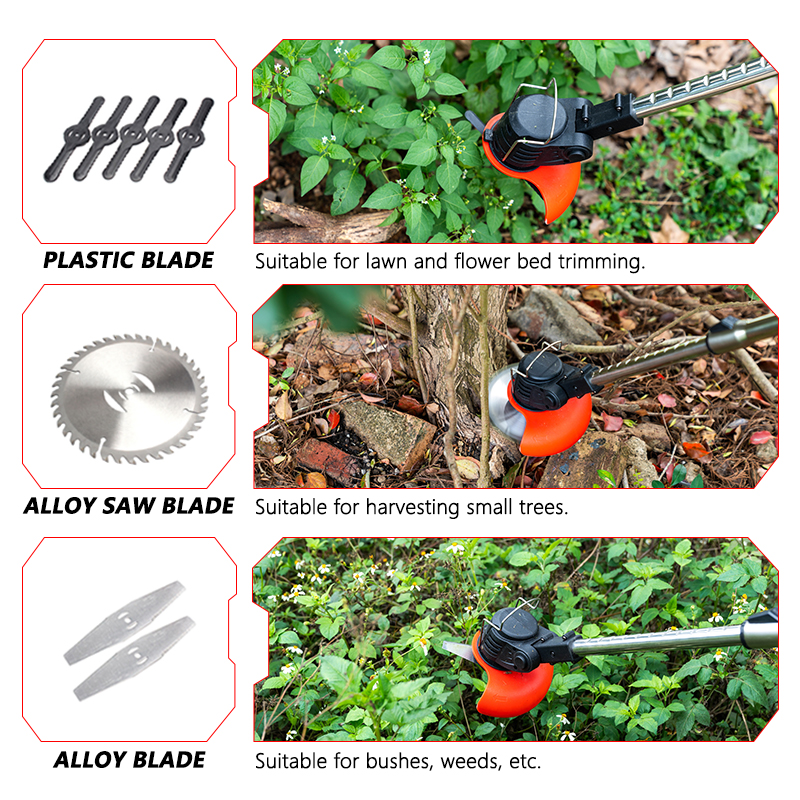
How to clean carburetor on lawn mower
Introduction
As the heart of your lawn mower’s engine in 2024, the carburetor plays a crucial role in ensuring smooth operation and optimal performance. Responsible for mixing fuel and air to create the combustible mixture that powers the engine, a clean and functioning carburetor is essential for keeping your lawn mower running efficiently. However, over time, dirt, gum, and debris can accumulate in the carburetor’s delicate passages and jets, leading to a range of performance issues, from difficulty starting to rough idling and reduced power.
Regular carburetor cleaning is an essential part of preventive maintenance for your lawn mower, helping to extend its lifespan and maintain its peak performance. While the process may seem daunting, it can be easily accomplished with basic tools, readily available supplies, and a bit of mechanical know-how. In this comprehensive guide, we’ll walk you through the step-by-step process of cleaning your lawn mower carburetor, ensuring your engine runs smoothly and efficiently for years to come.
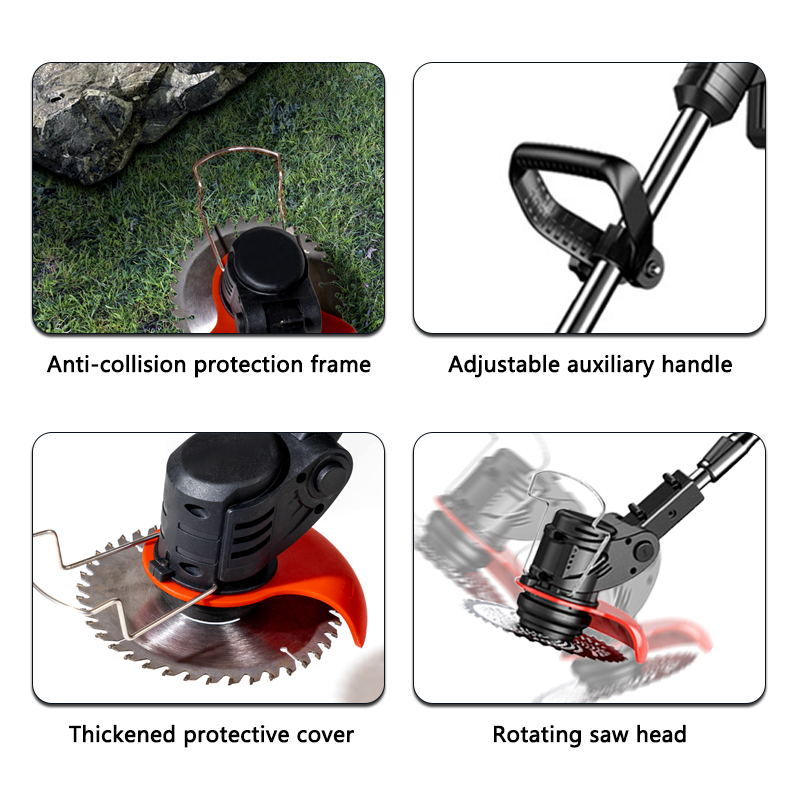
The Importance of Carburetor Maintenance in Lawn Mowers
Before diving into the cleaning process, it’s essential to understand the significance of maintaining your lawn mower’s carburetor. As a critical component of the engine, the carburetor is responsible for mixing fuel and air in the correct proportions, creating the combustible mixture that powers the engine. When the carburetor becomes clogged or dirty, the fuel-air mixture is disrupted, leading to a range of performance issues that can significantly impact your mowing experience.
Difficulty starting the lawn mower is a common symptom of a dirty carburetor. Even with a fully charged battery and good spark plugs, the engine may struggle to turn over due to the improper fuel-air mixture. Rough idling, characterized by an uneven or surging engine RPM, is another telltale sign of a clogged carburetor. This occurs because the carburetor is unable to regulate the fuel flow consistently, resulting in fluctuations in engine speed.
Perhaps the most noticeable consequence of a dirty carburetor is power loss. As the fuel-air mixture becomes compromised, the engine’s ability to generate power is diminished, making it difficult for the lawn mower to maintain its speed or tackle challenging mowing conditions. To prevent these performance issues and keep your lawn mower running smoothly, regular carburetor cleaning is essential.
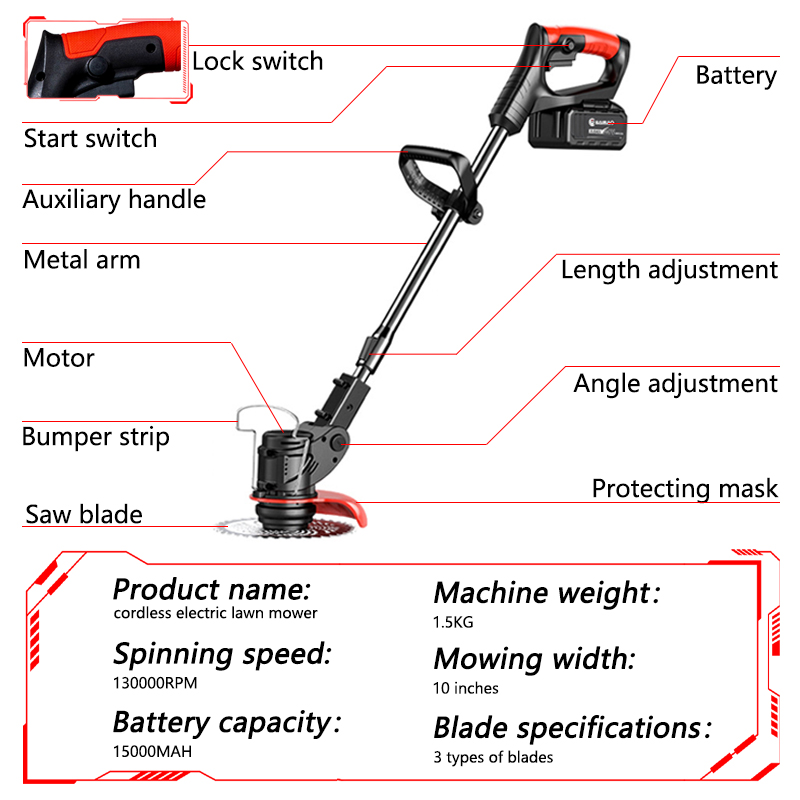
Understanding the Signs of a Dirty Carburetor
As mentioned earlier, a dirty carburetor can manifest itself in several ways, affecting the lawn mower’s starting, idling, and overall power. Recognizing these signs early on can help you determine when it’s time to clean the carburetor and prevent further complications.
One of the most obvious signs of a dirty carburetor is difficulty starting the lawn mower. Even with a fully charged battery and good spark plugs, the engine may struggle to turn over or require repeated attempts to start. This is because the carburetor is unable to deliver the proper fuel-air mixture to the engine, making it difficult for the combustion process to initiate.
Rough idling, characterized by an uneven or surging engine RPM, is another common symptom of a clogged carburetor. This occurs because the carburetor is unable to regulate the fuel flow consistently, resulting in fluctuations in the engine’s air-fuel ratio. As the mixture varies, the engine RPM rises and falls, creating a rough and unstable idle.
Perhaps the most noticeable consequence of a dirty carburetor is power loss. As the fuel-air mixture becomes compromised, the engine’s ability to generate power is diminished. This can manifest in several ways, such as the lawn mower struggling to maintain its speed, bogging down when encountering thicker grass, or having difficulty tackling inclines. If you notice any of these signs, it’s a good indication that your lawn mower‘s carburetor needs cleaning.
How to Clean a Dirty Carburetor on a Lawn Mower
Gathering the Necessary Tools and Materials
Before embarking on the carburetor cleaning process, it’s crucial to gather the necessary tools and materials to ensure a smooth and efficient task. Safety should always be paramount, so make sure you have the appropriate protective gear, including safety glasses, gloves, and a well-ventilated workspace.
Essential tools for carburetor cleaning include a socket wrench set, screwdrivers (including a flathead screwdriver), a funnel, a container for old fuel, and a small brush for removing stubborn debris. Additionally, you’ll need carburetor cleaner, lint-free cloths or paper towels, and a clean workspace.
Locating the Carburetor
The carburetor’s location can vary depending on the specific lawn mower model and brand, so it’s important to consult your owner’s manual for precise instructions. However, in general, the carburetor is typically situated near the top of the engine, close to the air intake and fuel line.
Once you’ve identified the general area, look for a small metal box with multiple hoses and connections attached. This is usually the carburetor. If you’re still unsure, refer to your owner’s manual or seek assistance from a knowledgeable mechanic.
Disassembling the Carburetor with Safety Precautions
Now that you’ve located the carburetor and gathered the necessary tools, it’s time for disassembly. However, safety remains a top priority. Remember to work in a well-ventilated area where there are no open flames or sparks. Keep cleaning materials away from children and pets, and ensure the engine is completely cool and turned off before proceeding.
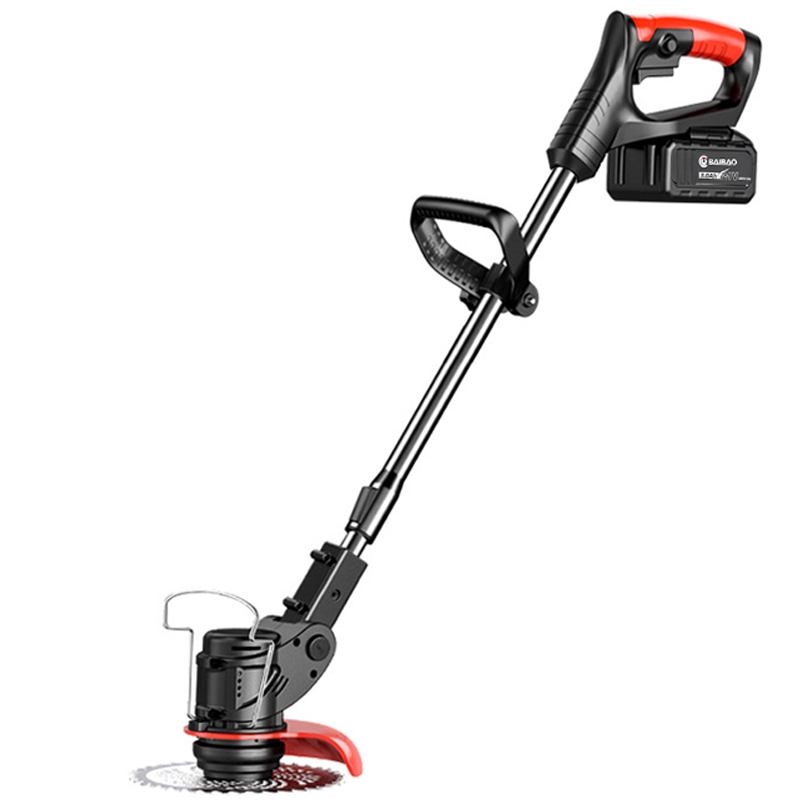
Removing Components Carefully:
Start by carefully disconnecting the air intake filter. Locate the hose or clamp securing it to the carburetor and detach it gently. Next, proceed to disconnect the fuel line by pinching the clamp with pliers and pulling the hose free from the carburetor nipple. Depending on your specific model, there may be additional hoses or electrical connections attached to the carburetor. Identify and disconnect them carefully, taking note of their location for reassembly later.
Unscrewing the Carburetor:
With all the hoses and connections removed, carefully locate the bolts or screws that secure the carburetor to the engine block. Use the appropriate socket wrench or screwdriver size to loosen and remove these fasteners. Be mindful of any washers or spacers located between the carburetor and the engine block, as these need to be reinstalled during reassembly.
Gently Handling the Carburetor:
Once the bolts or screws are removed, gently lift the carburetor from its position on the engine. Handle it with care to avoid damaging any delicate components or internal parts. Place the carburetor on a clean, flat surface to prevent any loose components from falling out.
Cleaning the Carburetor for Optimal Performance
Now that the carburetor is disassembled, it’s time for the cleaning process itself. This involves removing dirt, debris, and any accumulated gunk that may be hindering its proper functioning.
Draining Old Fuel:
Before proceeding, ensure you have a container ready to collect the old fuel. Carefully place the carburetor upside down over the container, allowing any remaining fuel to drain out. Dispose of this old fuel responsibly according to local regulations.
Cleaning with Carburetor Cleaner:
With the old fuel drained, it’s time to utilize the carburetor cleaner. Following the specific instructions on the cleaner’s label, carefully spray the cleaner into the carburetor’s jets, passages, and chambers. The cleaner will help to loosen and dissolve any dirt, gum, or debris that may be present.
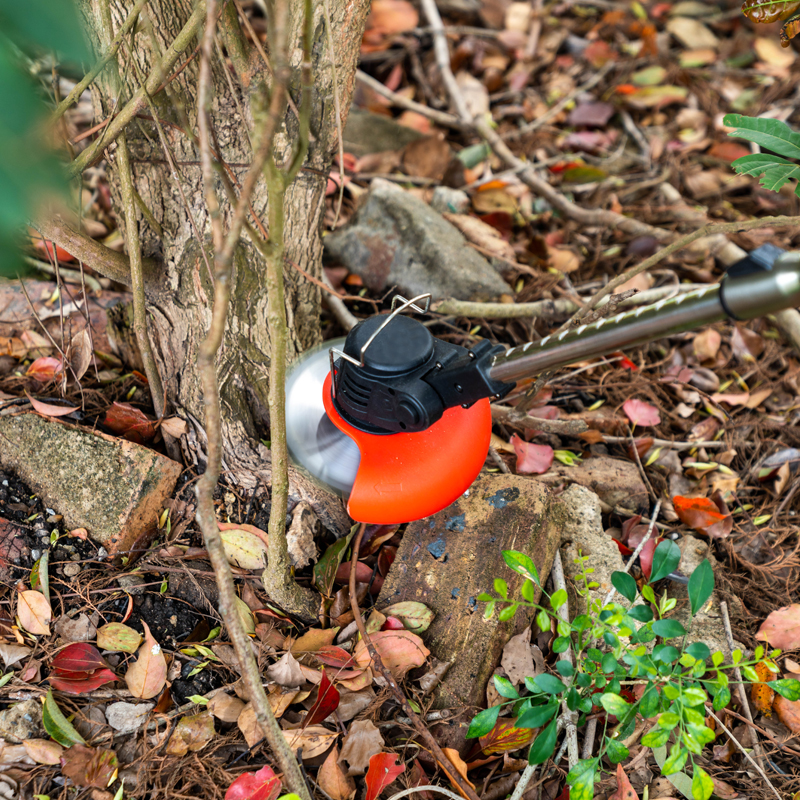
Soaking for Effective Cleaning:
After spraying the carburetor cleaner, allow it to soak for the recommended time specified on the product label. This soaking period is crucial for the cleaner to effectively dissolve and loosen any built-up grime.
Scrubbing with a Gentle Touch:
Once the soaking period is complete, use the small brush provided in your cleaning kit to gently scrub the carburetor’s components. Focus on areas where debris is likely to accumulate, such as the jets, passages, and needle valve. However, avoid using harsh materials or wire brushes, as these can damage delicate parts within the carburetor.
Reassembling the Carburetor for Proper Functioning
With the carburetor thoroughly cleaned, it’s time to reassemble it for proper reinstallation onto the engine. Here’s a breakdown of this process:
Inspecting and Replacing Gaskets:
Before reassembly, take a moment to inspect the gaskets or seals that will be reused. These gaskets ensure a proper seal between the carburetor and the engine block, preventing leaks. If any of the gaskets appear damaged, worn, or cracked, it’s crucial to replace them with new ones to avoid leaks after reinstallation.
Reinstalling Components:
Now, carefully begin reassembling the carburetor. Meticulously reattach any internal components that may have been removed for cleaning, ensuring they are positioned and secured correctly. Once internal components are in place, proceed to reconnect the hoses and electrical connections that were previously disconnected during disassembly. Use pliers to tighten any hose clamps securely.

Reinstalling the Carburetor Back on the Engine
With the carburetor fully reassembled, it’s time to return it to its original position on the engine block.
Securing the Carburetor:
Carefully lift the carburetor and place it back in its designated location on the engine. Secure it with the bolts or screws that were removed during disassembly. Remember to tighten these fasteners to the specified torque using a torque wrench to ensure a proper and secure fit. A loose carburetor can lead to leaks and performance issues.
Reconnecting Electrical Connections (if applicable):
If your carburetor had any electrical connections attached, such as for a throttle solenoid, carefully reconnect them now. Ensure all connections are secure and properly seated.


White smoke from lawn mower
Introduction
The sight of white smoke billowing from your lawnmower can be a cause for concern, especially if you’re not familiar with the potential causes and their implications. While white smoke can indicate a range of issues, it’s important to understand that not all of them are necessarily serious. In this comprehensive guide, we’ll delve into the various causes of white smoke in lawnmowers, explore effective solutions, and provide preventive measures to keep your mower running smoothly and smoke-free in 2024.
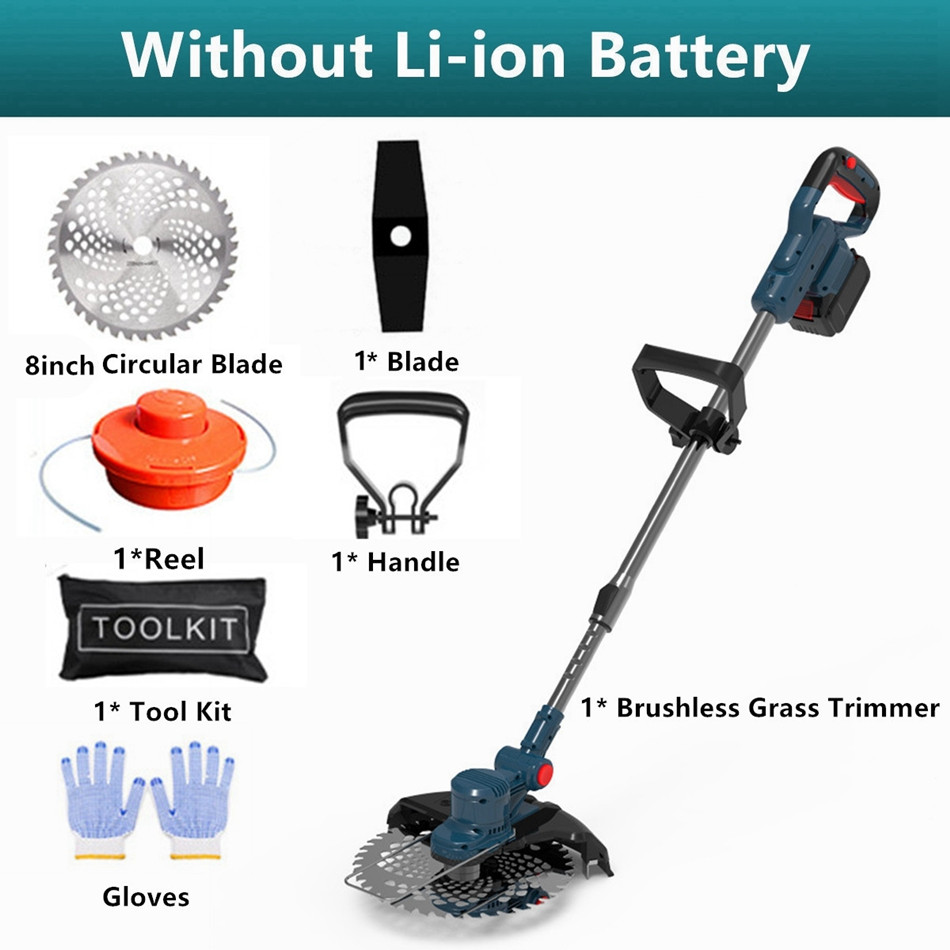
Why is White Smoke Coming Out Of My Lawn Mower?
White smoke emanating from your lawn mower’s exhaust can stem from various underlying issues within the engine. Understanding these causes is crucial to diagnosing and addressing the problem effectively.
1. Overfilled Oil Reservoir
One of the common reasons for white smoke is an overfilled oil reservoir. When there is excessive oil in the engine, it can seep into areas where it shouldn’t be, such as the combustion chamber. During operation, this excess oil burns along with the fuel, producing white smoke. It’s important to check your oil levels regularly and ensure they are within the recommended range specified in your mower’s manual.
2. Incorrect Fuel Mixture
Another potential cause of white smoke is an incorrect fuel mixture, particularly if you are using a two-stroke engine. If the fuel mixture is too rich (too much oil in proportion to gasoline), it can lead to incomplete combustion and produce white smoke as a result. Ensuring you use the correct fuel mixture as specified by the manufacturer is essential for proper engine performance and to avoid issues like white smoke.
3. Water or Moisture in the Fuel
Water or moisture in the fuel can also be a culprit behind white smoke. When water enters the combustion chamber, it can vaporize and appear as white smoke in the exhaust. This problem can arise from contaminated fuel or from improper storage of the lawn mower in damp conditions. Using clean, dry fuel and storing your mower properly can help prevent this issue.
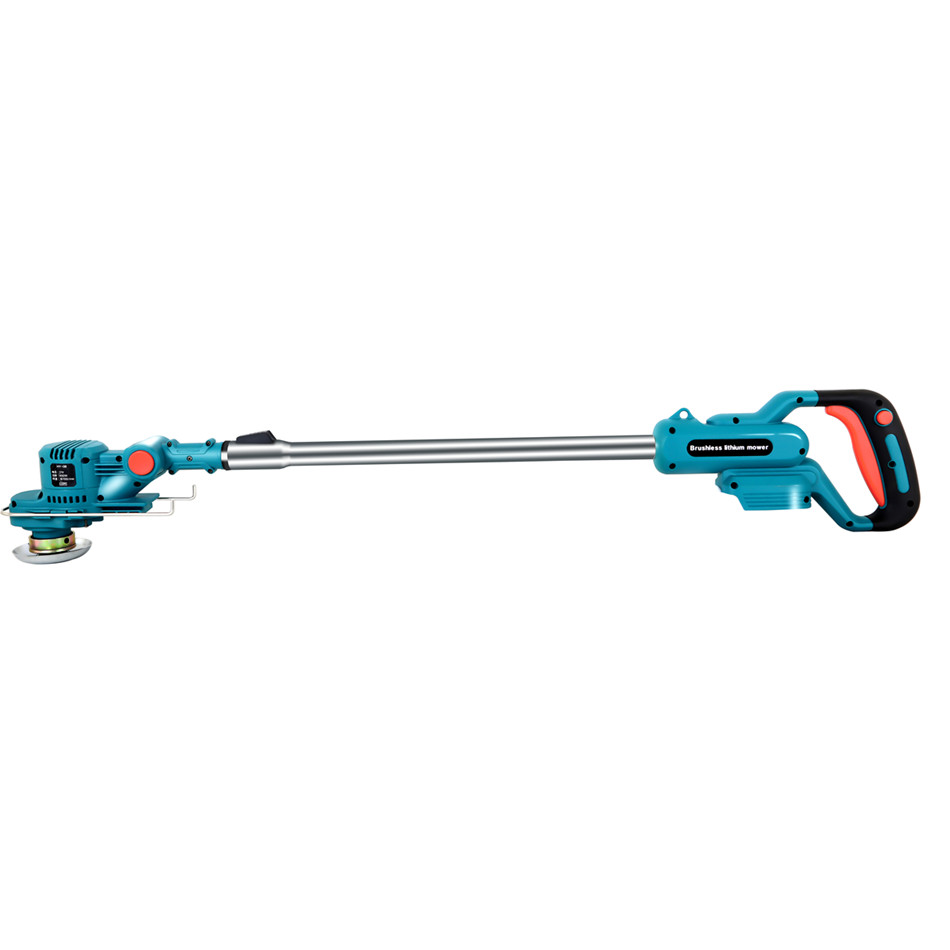
4. Coolant Leakage
White smoke can sometimes indicate a more serious issue such as coolant leakage into the combustion chamber. Modern lawn mowers with liquid-cooled engines can experience this problem if there is a leak in the coolant system. Coolant entering the combustion chamber will vaporize and appear as white smoke. It’s crucial to inspect your mower for any signs of coolant leaks and address them promptly to prevent engine damage.
How to Troubleshoot White Smoke Issues
When you notice white smoke coming from your lawn mower, prompt action is necessary to identify and resolve the underlying problem. Here are steps you can take to troubleshoot and potentially fix the issue:
1. Check Oil Levels and Quality
Begin by checking the oil levels in your lawn mower. If you suspect overfilling or contamination of the oil, drain and replace it with the appropriate type and amount recommended by the manufacturer. Ensure the oil is clean and not diluted with gasoline or water, which can also cause white smoke.
2. Inspect the Air Filter
A clogged or dirty air filter can affect the air-fuel mixture in the engine, leading to incomplete combustion and white smoke. Remove the air filter and inspect it for dirt, debris, or damage. Clean or replace the air filter if necessary to ensure proper airflow to the engine.
3. Examine the Fuel System
Inspect the fuel system for any issues that could contribute to white smoke, such as clogged fuel filters, old or contaminated fuel, or incorrect fuel mixture. Replace the fuel filter if it appears dirty or clogged, and use fresh, clean fuel with the correct oil-to-gas ratio for two-stroke engines.
4. Check for Coolant Leaks
If you suspect coolant leakage as the cause of white smoke, carefully inspect the coolant system for signs of leaks. Look for puddles or stains under the mower, and check the coolant reservoir for low levels or discoloration. Repair any leaks found and ensure the coolant system is sealed properly to prevent further issues.
5. Conduct a Compression Test
For more serious or persistent white smoke issues, performing a compression test can help diagnose internal engine problems such as worn piston rings or a blown head gasket. A lower than normal compression reading can indicate these issues, which may require professional repair or replacement of engine components.
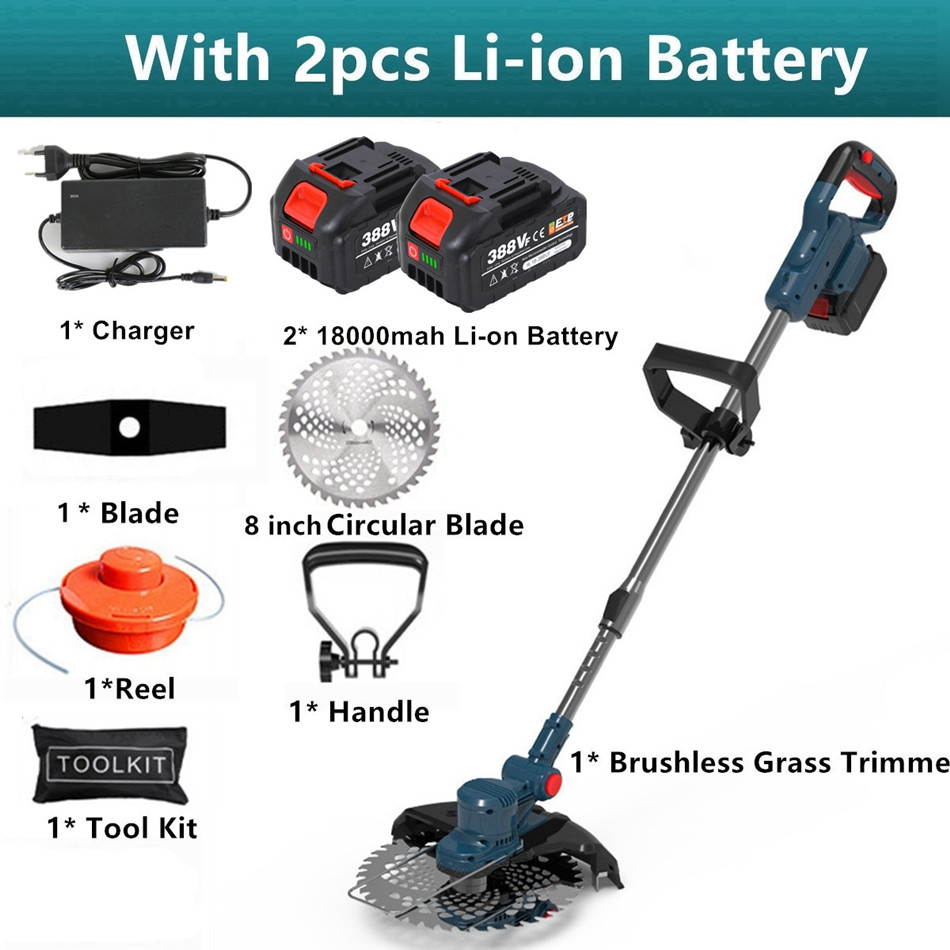
Preventive Maintenance Tips
Preventing white smoke issues in your lawn mower involves regular maintenance and care. Here are some preventive tips to keep your mower in top condition:
1. Follow Manufacturer’s Maintenance Schedule
Adhere to the maintenance schedule outlined in your mower’s manual, including oil changes, air filter checks/replacements, and spark plug inspections. Regular maintenance helps prevent issues that can lead to white smoke.
2. Use Quality Fuel and Oil
Always use high-quality fuel and oil recommended by the manufacturer. Poor quality fuel or oil can lead to combustion problems and white smoke issues.
3. Store Your Mower Properly
Store your lawn mower in a clean, dry place to prevent moisture or water from contaminating the fuel or engine components. Proper storage also helps extend the life of your mower.

4. Keep Cooling System Intact
If your mower has a liquid-cooled engine, monitor the coolant levels and inspect the system for leaks regularly. Maintaining the cooling system prevents overheating and potential coolant leaks that can cause white smoke.
Decoding the Meaning of White Smoke
White smoke in a lawnmower typically arises from burning oil. This can occur due to various factors, ranging from simple overfilling to more complex mechanical issues. However, it’s crucial to note that white smoke isn’t always an immediate cause for alarm. In some cases, it might just be a temporary issue that can be easily resolved.
Effective Solutions for White Smoke Issues
-
Check Oil Level: Regularly check the oil level using the dipstick and ensure it’s within the recommended range. If the oil level is too high, drain the excess oil carefully.
-
Inspect for Oil Leaks: Look for signs of oil leaks around the engine, such as wet spots or drips. If you notice any leaks, then locate the source and then repair or replace the damaged seals or gaskets.
-
Operate Engine on Level Ground: Avoid mowing on extremely steep slopes, then as this can cause oil to pool and potentially lead to white smoke.
-
Clean or Replace Crankcase Breather: If the crankcase breather is clog, then clean it thoroughly. If it’s damaged, replace it with a new one.
-
Seal Crankcase Air Leak: Identify the source of the air leak and seal it using appropriate gaskets or sealants.
-
Repair or Replace Blown Head Gasket: Replacing a blown head gasket is a complex task and should be done by a qualified mechanic.
-
Address Worn Cylinder and/or Rings: Replacing worn cylinder and/or rings is a major engine repair and may require extensive labor and parts.
Preventive Measures to Avoid White Smoke
-
Regular Maintenance: Follow the recommended maintenance schedule for your lawnmower, including oil changes, then air filter replacements, and tune-ups.
-
Use High-Quality Oil: Always use high-quality oil recommended by the manufacturer for your lawnmower engine.
-
Check for Leaks Regularly: Inspect your lawnmower regularly for signs of oil or coolant leaks.
-
Avoid Overfilling Oil Reservoir: Carefully check the oil level using the dipstick and avoid overfilling.
-
Operate Engine on Level Ground: As much as possible, mow on level ground to prevent oil from pooling in one side of the engine.
-
Taking Action and Seeking Help
If you notice white smoke coming from your lawnmower, the first step is to turn off the engine immediately. Continued operation can worsen the underlying issue and potentially damage the engine. Identify the severity of the smoke. If it’s a small puff that disappears quickly, it might be a temporary issue like burning off excess oil. However, if the smoke is thick, persistent, or accompanied by other symptoms like overheating or unusual noises, it’s best to seek professional help.
A qualified mechanic can diagnose the root cause of the white smoke issue by examining the engine, checking oil levels, and then performing pressure tests. They possess the expertise and tools to repair oil leaks, replace faulty components like the crankcase breather or head gasket, and address issues like worn cylinder and/or rings.
Importance of Addressing White Smoke Promptly
Addressing white smoke promptly is crucial for several reasons. Firstly, it helps prevent further damage to the engine. Ignoring the issue can lead to overheating, increased wear and tear, and ultimately, a more costly repair down the line. Secondly, then white smoke can be a symptom of a more serious problem, such as a blown head gasket, which can significantly impact the mower’s performance and lifespan. Early detection and repair can save you time, money, and hassle in the long run.

Conclusion: Keeping Your Lawn Mower Smoke-Free
By understanding the causes and solutions for white smoke in lawnmowers, then you can effectively troubleshoot the problem and ensure your mower runs smoothly. Implementing preventive measures like regular maintenance, using high-quality oil, and operating on level ground can significantly reduce the chances of encountering white smoke issues. Remember, if the problem persists or seems beyond your expertise, then don’t hesitate to seek help from a qualified mechanic to keep your lawnmower running efficiently and smoke-free for years to come.
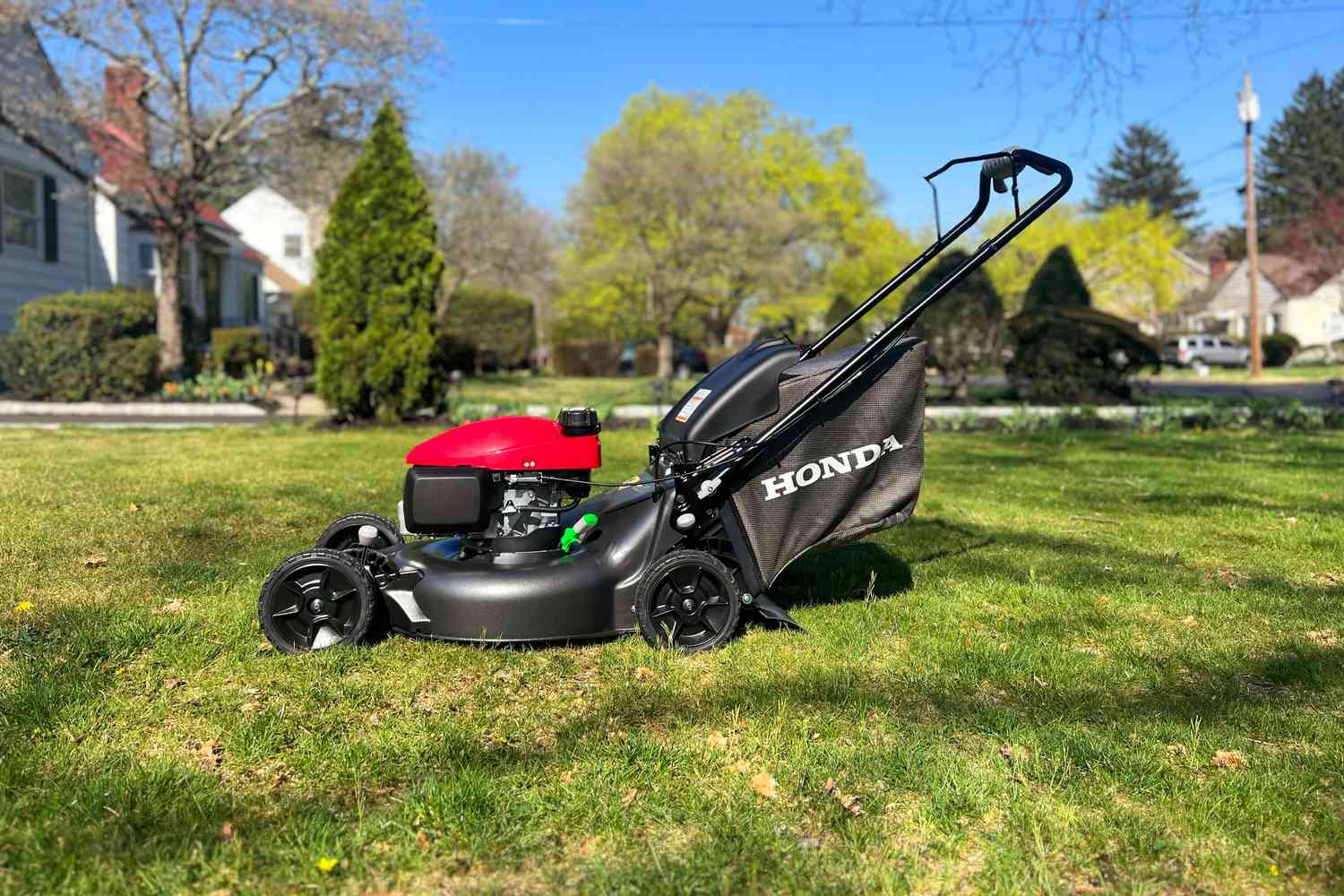
What is a self propelled lawn mower
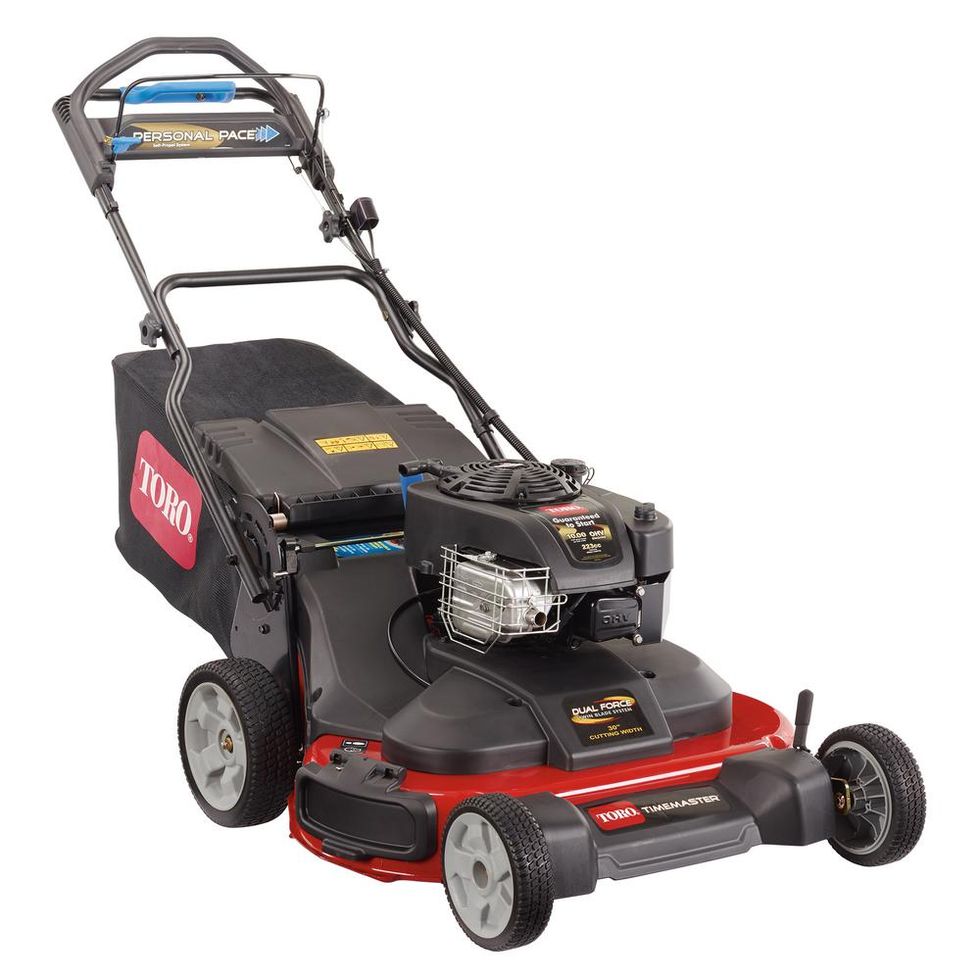
In the realm of lawn care, where lush green carpets meet the demands of homeowners and enthusiasts, self-propelled lawn mowers stand as a testament to innovation and convenience. These ingenious machines, imbued with the power of self-propulsion, have transformed the way we approach lawn maintenance, replacing strenuous pushing with effortless gliding. Embark on a journey to uncover the intricacies of self-propelled lawn mowers, exploring their mechanisms, benefits, and the diverse range of options available to suit every lawn care need.
Unveiling the Essence of Self-Propulsion
At the heart of a self-propelled lawn mower lies a captivating blend of mechanical ingenuity and practical application. Unlike their push mower counterparts, self-propelled models harness the power of an internal combustion engine or an electric motor to propel themselves forward, eliminating the need for manual pushing. This transformative feature revolutionizes lawn care, allowing users to focus on steering and maneuvering the mower rather than expending physical effort.
Delving into the Mechanisms of Self-Propulsion
The power of self-propulsion manifests in a variety of forms, each tailored to deliver optimal performance and cater to specific needs. Gasoline-powered self-propelled lawn mowers, the most common type, utilize a traditional internal combustion engine to generate power. This power is then transmitted to the wheels via a gear-driven or hydrostatic transmission system, setting the mower in motion. Electric self-propelled lawn mowers, on the other hand, draw their energy from a battery pack, powering an electric motor that drives the wheels. Hybrid self-propelled lawn mowers, a testament to technological advancement, combine the efficiency of an electric motor with the extended runtime of a gasoline engine, offering a versatile solution.
Transmission Systems: The Power Brokers
The transmission system serves as the intermediary between the power source and the wheels, translating engine power into propelling force. Gear-driven transmissions, characterized by their simplicity and affordability, employ a series of gears to transfer power to the wheels. Hydrostatic transmissions, renowned for their smooth operation and variable speed control, utilize hydraulic fluid to transmit power, providing a more user-friendly experience. Hybrid transmissions, a fusion of gear-driven and hydrostatic technologies, offer a balance of efficiency and performance.
Control Mechanisms: At Your Command
Self-propelled lawn mowers empower users with intuitive control mechanisms, allowing them to regulate the mower’s speed and direction with precision. Traditional handle-based controls, often found on rear-wheel drive models, provide a familiar and straightforward interface. Lever-based controls, typically featured on front-wheel drive and zero-turn mowers, enhance ergonomic comfort and offer more precise speed adjustments. Electronic controls, the epitome of modern technology, enable users to seamlessly control the mower’s speed and direction using buttons or touchscreens.
A Spectrum of Self-Propelled Lawn Mowers: Tailored to Every Need
The world of self-propelled lawn mowers encompasses a diverse range of options, each designed to address specific lawn care requirements and preferences. Rear-wheel drive mowers, the most common type, offer classic maneuverability and handling, making them ideal for flat lawns and straightforward mowing tasks. Front-wheel drive mowers, equipped with powered front wheels, excel at tackling slopes and uneven terrain, providing superior traction and stability. All-wheel drive mowers, the pinnacle of power and grip, conquer the most challenging landscapes, making them suitable for large properties and demanding mowing conditions. Zero-turn mowers, renowned for their exceptional maneuverability, enable tight turns and precise edging, transforming lawn care into an art form.
Informed Decision-Making: Choosing the Right Self-Propelled Lawn Mower
Selecting the ideal self-propelled lawn mower demands a careful assessment of individual needs and lawn care requirements. Lawn size plays a crucial role in determining the appropriate mower type, with larger lawns benefiting from the efficiency of all-wheel drive models, while smaller spaces may find rear-wheel drive mowers sufficient. Terrain considerations influence the choice between rear-wheel drive for flat lawns and front-wheel or all-wheel drive for slopes and uneven surfaces. Personal preferences, such as the desired level of maneuverability and handling, further guide the selection process.
Effortless Lawn Care: The Benefits of Self-Propelled Lawn Mowers
Self-propelled lawn mowers revolutionize lawn care by introducing a host of compelling benefits that elevate the mowing experience. Reduced physical strain and fatigue stand as a hallmark advantage, as the mower does the work, not the user’s arms and legs. This translates into increased mowing speed and efficiency, allowing users to cover more ground in less time, completing tasks faster. Enhanced maneuverability and handling empower users to navigate slopes, obstacles, and tight spaces with ease, making lawn care less demanding and more enjoyable.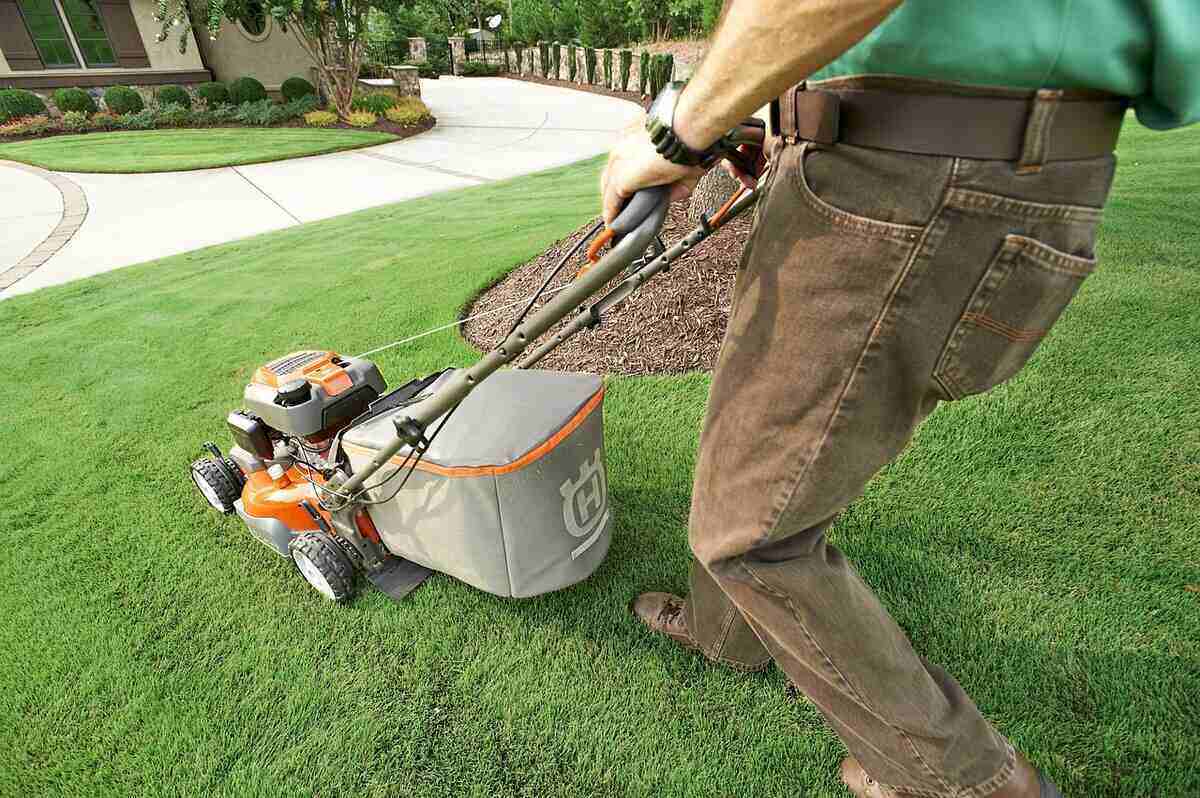
Features to Enhance Your Self-Propelled Mowing Experience
Beyond the core functionalities, self-propelled lawn mowers offer a variety of features that further elevate the mowing experience and cater to diverse user preferences.
-
Cutting Width: This refers to the swath of grass cut in a single pass by the mower. Wider cutting widths translate to less time spent mowing larger lawns, while narrower widths provide superior maneuverability for intricate mowing tasks or navigating around obstacles.
-
Cutting Height Adjustment: Precise control over grass height is vital for maintaining a healthy lawn. Self-propelled lawn mowers typically offer multiple cutting height settings, allowing users to adjust the blade position to suit the desired grass length and seasonal conditions.
-
Mulching Capabilities: Mulching lawn mowers shred grass clippings into fine particles that decompose and return nutrients to the soil, promoting healthy grass growth and reducing the need for fertilizer. This environmentally friendly feature eliminates the need for bagging or raking grass clippings, saving time and effort.
-
Bagging Options: For those who prefer a cleaner mowing experience or have specific lawn care requirements, self-propelled lawn mowers can be equipped with grass collection bags. These bags capture grass clippings during mowing, allowing for easy disposal or composting.
-
Additional Features: Modern self-propelled lawn mowers often boast a range of additional features that enhance convenience and functionality. Side discharge allows grass clippings to be deposited to the side of the mower, while washout ports simplify cleaning after mowing. LED headlights illuminate the mowing path during low-light conditions, and cruise control maintains a consistent mowing speed for effortless operation.

Operating and Maintaining Your Self-Propelled Lawn Mower for Peak Performance
Ensuring the longevity and optimal performance of your self-propelled lawn mower requires a commitment to proper operation and maintenance practices.
-
Pre-Mowing Checklist: Before embarking on your mowing adventure, take a few moments to perform a pre-mowing inspection. Verify that tire pressure is at the recommended level, ensure blades are sharp for clean cuts, and check engine oil levels for optimal performance.
-
Mowing Techniques: For a smooth and efficient mowing experience, maintain a consistent speed while avoiding overloading the mower by attempting to cut too much grass at once. Varying mowing patterns helps prevent uneven cutting and promotes healthy lawn growth.
-
Regular Maintenance: Extend the lifespan of your self-propelled lawn mower by adhering to a regular maintenance schedule. Clean the mower thoroughly after each use, removing grass clippings and debris from the undercarriage and blade. Sharpen blades regularly to ensure clean cuts and prevent grass tearing. Regularly check for any mechanical issues and address them promptly.
-
Winter Storage: If you reside in a region with harsh winters, take steps to properly store your self-propelled lawn mower during the off-season. Empty the fuel tank to prevent deterioration, disconnect batteries to avoid discharge, and store the mower in a dry, sheltered location to protect it from the elements.
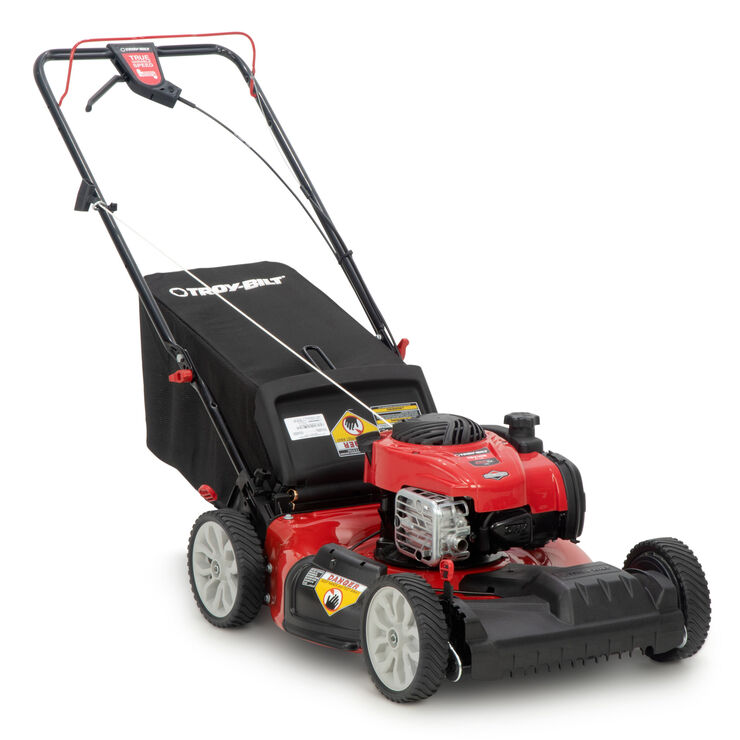
Prioritizing Safety: Essential Precautions for Operating Self-Propelled Lawn Mowers
Operating a self-propelled lawn mower requires adherence to safety protocols to ensure a hazard-free mowing experience.
-
Protective Gear: Always wear appropriate protective gear while mowing. This includes eye protection to shield your eyes from flying debris, hearing protection to mitigate noise exposure, and sturdy footwear for secure footing on uneven terrain.
-
Mind Your Surroundings: Maintain a safe distance from children and pets during operation to prevent accidental injuries. Avoid mowing on wet or slippery surfaces, as this can lead to loss of traction and potential accidents. Be aware of your surroundings and watch out for obstacles or uneven terrain hazards.
-
Safe Operation Practices: Follow the manufacturer’s safety instructions carefully. Familiarize yourself with the mower’s controls and operation procedures before starting. Never leave a running mower unattended, and always disengage the self-propulsion mechanism before stopping or turning the mower off.
By prioritizing safety and adhering to operational guidelines, you can ensure a secure and enjoyable mowing experience with your self-propelled lawn mower. Remember, a well-maintained mower not only performs optimally but also contributes to a safer and more efficient lawn care routine.

Lifted Lawn Mower Elevate Your Lawn Care

In the realm of lawn care, standard lawn mowers have long reigned supreme, dutifully taming suburban yards and manicured landscapes. However, for those seeking to conquer more challenging terrain and venture beyond the confines of traditional lawn care, a new breed of mower has emerged: the lifted lawn mower. These formidable machines, imbued with enhanced capabilities and off-road prowess, have transformed the way we approach lawn maintenance and outdoor adventures.
Unveiling the Allure of Lifted Lawn Mowers
Lifted lawn mowers, characterized by their elevated stance and rugged construction, offer a compelling blend of practicality and excitement. By strategically raising the mower deck and chassis, these machines transcend the limitations of their standard counterparts, unlocking a world of possibilities.
Benefits: Unleashing the Power of Height
At the heart of a lifted lawn mower’s appeal lies its transformative ability to conquer uneven terrain and obstacles with newfound ease. Increased ground clearance empowers these machines to navigate rough patches, steep inclines, and even rocky landscapes with unwavering stability. Additionally, the elevated perspective provides an enhanced vantage point of the mowing area, ensuring a more precise and efficient mowing experience.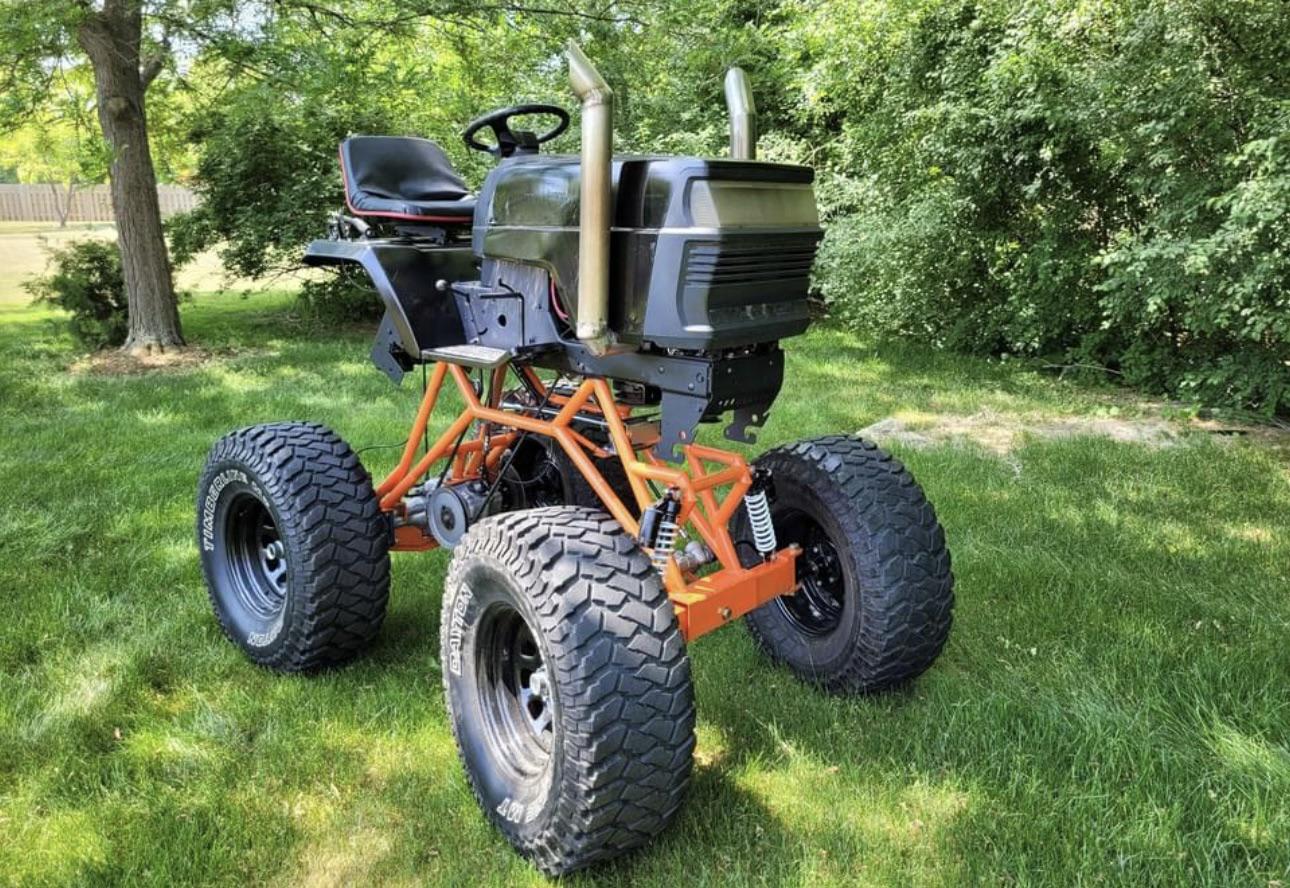
Types of Lifted Lawn Mowers: Catering to Diverse Needs
The world of lifted lawn mowers encompasses a diverse range of configurations, each tailored to address specific needs and preferences. Spindle lifts, employing individual spindle extensions, offer a straightforward approach to height adjustment. Axle lifts, on the other hand, elevate the entire mower chassis, providing a more substantial increase in ground clearance. Body lifts, achieved through custom brackets, raise the mower body itself, while suspension lifts enhance ground clearance by upgrading the mower’s suspension components.
Selecting the Ideal Lift Kit: A Matter of Informed Choice
Choosing the right lift kit for your lawn mower demands careful consideration of several factors. The type of mower, the desired lift height, budgetary constraints, and personal riding style all play a role in determining the most suitable option. Additionally, ensuring compatibility between the lift kit and the specific lawn mower model is paramount. Consulting with experienced mechanics or lawn mower specialists can prove invaluable in navigating the selection process.
Installation and Safety: Prioritizing Prudence
The installation of a lift kit, whether undertaken by qualified mechanics or DIY enthusiasts, should adhere to strict safety protocols. Proper installation techniques are crucial for maintaining the mower’s stability, handling, and center of gravity. During operation, lifted lawn mowers demand heightened awareness of their altered characteristics, exercising caution on slopes and uneven terrain.
Performance Enhancements: Pushing the Boundaries
For those seeking to maximize the capabilities of their lifted lawn mower, a range of performance enhancements beckons. Upgrading tires to larger, off-road-specific models provides enhanced traction and grip, while aggressive tread patterns tackle challenging terrain with unwavering confidence. Performance upgrades, such as exhaust systems or air intakes, can further elevate the mower’s capabilities.
Off-Road Adventures: Unveiling Hidden Horizons
Lifted lawn mowers transcend the boundaries of traditional lawn care, unlocking a world of off-road adventures. Exploring trails and traversing rough terrain, once inaccessible to standard mowers, becomes a reality. Clearing brush and debris from overgrown areas or remote properties transforms these machines into versatile tools for land management. During winter months, lifted lawn mowers can even tackle snow removal tasks with surprising efficiency.
Legal and Regulatory Considerations: Navigating the Rules
Before embarking on off-road expeditions, it is essential to familiarize oneself with local regulations and ordinances governing the use of lifted lawn mowers. Potential insurance implications and safety concerns should also be carefully evaluated. Operating lifted lawn mowers responsibly and adhering to safety guidelines is paramount to ensuring a safe and enjoyable experience.
Maintenance and Care: Ensuring Longevity
Regular maintenance of lift kits and associated components is crucial for maintaining the optimal performance and longevity of a lifted lawn mower. Inspecting tires, suspension, and other affected parts for wear and tear is essential. Proper lubrication and adjustments ensure that the lift kit functions smoothly and efficiently.
Conclusion: Embracing the Lifted Lawn Mower Experience
Lifted lawn mowers, with their enhanced capabilities and off-road prowess, offer a compelling alternative to standard lawn mowers. By elevating your lawn care experience, these machines transform mundane tasks into exhilarating adventures. Whether conquering challenging terrain, exploring hidden frontiers, or tackling snow removal duties, lifted lawn mowers redefine the possibilities of outdoor power equipment. Approach the world of lifted lawn mowers with informed decision-making, prioritize safe operation, and prepare to embrace a whole new dimension of lawn care and outdoor exploration.
The DIY Approach: Lifting Your Lawn Mower Yourself
For the mechanically inclined individual, tackling the installation of a lift kit on their own lawn mower can be a rewarding experience. However, venturing down the DIY path requires careful planning and meticulous execution. Here’s a breakdown of the essential steps involved:
-
Gather Your Tools and Materials: Before commencing, ensure you have the necessary tools and the specific lift kit compatible with your lawn mower model. Consult online resources or manuals for detailed instructions specific to your chosen lift kit. Standard tools like wrenches, sockets, screwdrivers, and a jack will likely be required.
-
Preparation is Key: Begin by thoroughly cleaning the work area and ensuring ample space for maneuvering the lawn mower. Drain the mower’s fuel and engine oil to prevent spills during the installation process. Disconnect the spark plug wire to eliminate the risk of accidental ignition.
-
Following Instructions: Meticulously follow the lift kit’s installation instructions, paying close attention to each step. Disassemble the necessary components of the lawn mower to facilitate the installation of the lift kit parts. Double-check all connections and tighten them to the specified torque values using a torque wrench.
-
Safety First: Throughout the process, prioritize safety. Utilize jack stands to securely support the raised mower during installation. Wear safety glasses and gloves to protect yourself from potential hazards. If you encounter any difficulties or uncertainties, don’t hesitate to consult a qualified mechanic for assistance.

The Financial Investment: Weighing the Costs
The cost of transforming your lawn mower into a lifted machine can vary depending on several factors. The type of lift kit, the complexity of the installation process (DIY versus professional), and any additional performance upgrades all contribute to the overall financial investment. Spindle lifts tend to be the most budget-friendly option, while suspension lifts often require more extensive modifications and carry a higher price tag. Factor in the potential cost of replacement tires and any necessary maintenance to arrive at a comprehensive financial picture.
The Future of Lifted Lawn Mowers: Innovation and Expansion
The realm of lifted lawn mowers is constantly evolving, with manufacturers developing innovative solutions to enhance their capabilities and appeal. New lift kit designs promise easier installation processes and improved stability. Additionally, the integration of technological advancements like ride control systems and advanced traction control could revolutionize the off-road lawn mower experience. As the popularity of lifted lawn mowers continues to rise, we can expect further innovations and advancements that push the boundaries of performance and functionality.

Power of Lathes: A Comprehensive Guide to Lathe Projects

Introduction
In the realm of woodworking and metalworking, lathes stand as indispensable tools, capable of transforming raw materials into intricate masterpieces. Whether you’re a seasoned craftsman or an aspiring woodworker, lathe projects offer an avenue to unleash creativity, hone skills, and produce functional or decorative items that enhance your home or workshop.
Understanding Lathes and Their Capabilities
Lathes are machines that rotate a workpiece, allowing a cutting tool to shape it into desired forms. They primarily function to create cylindrical or conical shapes, with the ability to perform various operations, including:
-
Turning: Removing material from the workpiece to create a smooth, rounded surface.
-
Facing: Flattening the end of a workpiece perpendicular to its axis.
-
Boring: Enlarging an existing hole or creating a new one within the workpiece.
-
Threading: Cutting helical grooves onto the workpiece to create a screw-like pattern.
-
Parting: Separating a workpiece into two distinct pieces along a defined line.
Essential Lathe Tools and Accessories
To embark on your lathe projects, you’ll need a basic set of tools and accessories:
-
Lathe Tool Rest: A support for the cutting tool, ensuring precise control and stability during operation.
-
Cutting Tools: A variety of cutting tools, including chisels, gouges, and parting tools, for different shaping tasks.
-
Chucks and Adapters: These secure the workpiece to the lathe spindle, allowing for various types of mounting.
-
Measuring Tools: Calipers, micrometers, and gauges for accurate measurement and dimension control.
-
Safety Gear: Protective glasses, gloves, and a dust mask to safeguard yourself from hazards.
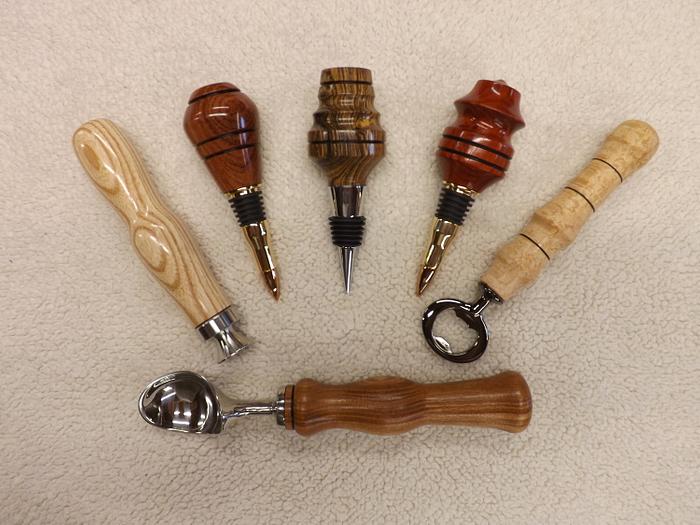
Types of Lathes and Their Applications
Lathes come in various types, each suited for specific purposes:
-
Wood Lathes: Designed for shaping wooden workpieces, ideal for creating bowls, spindles, and decorative elements.
-
Metal Lathes: Precision instruments for machining metal workpieces, producing parts like gears, shafts, and bushings.
-
Mini Lathes: Compact and versatile, suitable for small-scale projects in both wood and metalworking.
Choosing the Right Lathe Project
When selecting a lathe project, consider your skill level, available tools, and desired outcome. Start with simple projects like bowls or spindles to gain confidence, then progress to more complex tasks like threading or parting.
Safety Guidelines for Lathe Operations
Safety is paramount when working on a lathe. Always follow these guidelines:
-
Secure the workpiece: Ensure the workpiece is firmly mounted in the chuck or between centers to prevent accidents.
-
Maintain proper posture: Stand with a balanced stance, knees slightly bent, and keep your hands away from rotating parts.
-
Wear appropriate PPE: Use protective glasses, gloves, and a dust mask to shield yourself from hazards.
-
Never operate the lathe while impaired: Avoid operating the lathe while under the influence of alcohol or drugs.
-
Stay alert and focused: Maintain full attention on the task at hand and avoid distractions while operating the lathe.
Basic Lathe Operations for Beginners
Start with these fundamental lathe operations to master the basics:
-
Rough Turning: Initial shaping of the workpiece to remove excess material and establish the desired form.
-
Smoothing: Refining the surface of the workpiece to eliminate irregularities and achieve a smooth finish.
-
Detailing: Adding intricate details, such as grooves, ridges, or decorative elements, to enhance the appearance.
-
Sanding: Smoothing the surface with sandpaper to achieve a polished, professional finish.
Intermediate Lathe Projects to Elevate Your Skills
Once you’ve mastered the basics, venture into these intermediate projects:
-
Creating a Pen: Combine woodturning and metalworking skills to craft a personalized pen.
-
Turning a Bowl with a Foot: Shape a wooden bowl with a decorative foot for added elegance.
-
Threading a Bolt: Learn the process of creating screw threads on a metal workpiece.
-
Making a Candle Holder: Design and turn a wooden candle holder with intricate details.
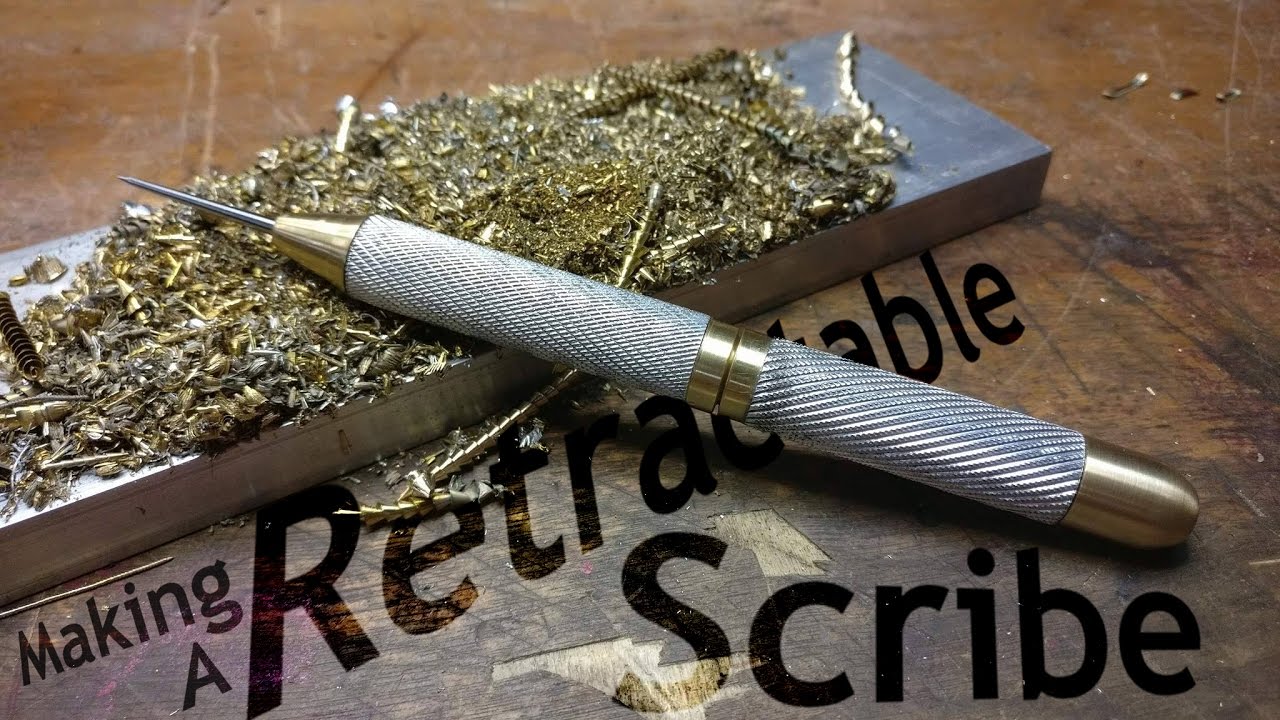
Advanced Lathe Projects for Experienced Craftsmen
For experienced woodworkers and metalworkers, these projects offer a challenge:
-
Turning a Chess Set: Create a complete chess set from wood, including intricate pieces and a board.
-
Machining a Gear: Produce a functional gear from metal using precise lathe techniques.
-
Turning an Intricate Spindle: Shape a complex spindle with multiple decorative elements and varying diameters.
-
Creating a Custom Table Lamp: Design and turn a unique table lamp from wood or metal.
-
Resources for Learning Lathe Techniques
Embarking on lathe projects can be an exciting yet daunting experience. Here are some resources to enhance your learning journey:
- Books and Online Tutorials: Numerous books and online tutorials cater to woodturning and metalworking, offering detailed instructions, project ideas, and safety tips.
- Lathe Forums and Communities: Online forums and communities connect aspiring and experienced lathe enthusiasts, allowing for knowledge sharing, troubleshooting assistance, and project inspiration.
- Woodworking or Metalworking Classes: Consider enrolling in woodworking or metalworking classes to gain hands-on experience and personalized guidance under the supervision of a skilled instructor.
- YouTube Channels: Many YouTube channels dedicated to woodworking and metalworking offer instructional videos featuring lathe techniques, project demonstrations, and valuable tips.

Maintenance and Care for Your Lathe
Just like any tool, proper care is crucial to ensure your lathe’s longevity and optimal performance. Here are some maintenance practices:
- Cleaning and Lubrication: Regularly clean your lathe to remove wood shavings, metal debris, and dust buildup. Follow the manufacturer’s instructions for lubricating moving parts to prevent friction and wear.
- Sharpening Cutting Tools: Maintain sharp cutting tools for efficient and clean cuts. Learn how to sharpen your lathe tools using a sharpening stone or invest in a sharpening jig.
- Belt Maintenance: Inspect and replace lathe belts if they show signs of wear or damage. Proper belt tension is crucial for smooth operation.
- Storage: When not in use, store your lathe in a clean, dry environment to prevent rust and dust accumulation. Cover the lathe to protect it from dust and debris.
Safety Beyond the Basics: Advanced Safety Techniques for Experienced Users
As you progress in your lathe projects, consider incorporating these advanced safety techniques:
- Using Outboard Tools: Learn the safe use of outboard tools, such as steady rests and follower rests, to provide additional support and stability during specific turning operations.
- Dust Collection Systems: Implement a dust collection system on your lathe to minimize dust inhalation and maintain a clean work environment.
- Sharpening Techniques for Specific Tools: Mastering sharpening techniques for different lathe tools, like skew chisels and parting tools, ensures optimal cutting performance and reduces the risk of accidents.
- Advanced Workholding Techniques: With experience, explore advanced workholding techniques like chucking techniques and using centers for longer workpieces. Always prioritize safe and secure workpiece mounting.

The Future of Lathe Technology: Embracing Innovation
The realm of lathe technology is constantly evolving, introducing exciting advancements for woodworkers and metalworkers alike. Here’s a glimpse into what the future holds:
- CNC Lathes: Computer Numerical Control (CNC) lathes offer increased precision and automation for complex projects.
- Digital Readouts: Digital readouts provide real-time data on speed, feed rates, and tool positions, enhancing control and accuracy.
- Variable Speed Drives: Variable speed drives offer a wider range of speeds, allowing for optimal tool selection and efficient cutting across different materials.
- Safety Features: Advanced lathes may incorporate built-in safety features, such as automatic shut-off mechanisms in case of emergencies.
These advancements, along with continued exploration and innovation, promise to enhance the capabilities and safety of lathes, further empowering woodworkers and metalworkers to create their masterpieces.

Under driveway boring tool rental
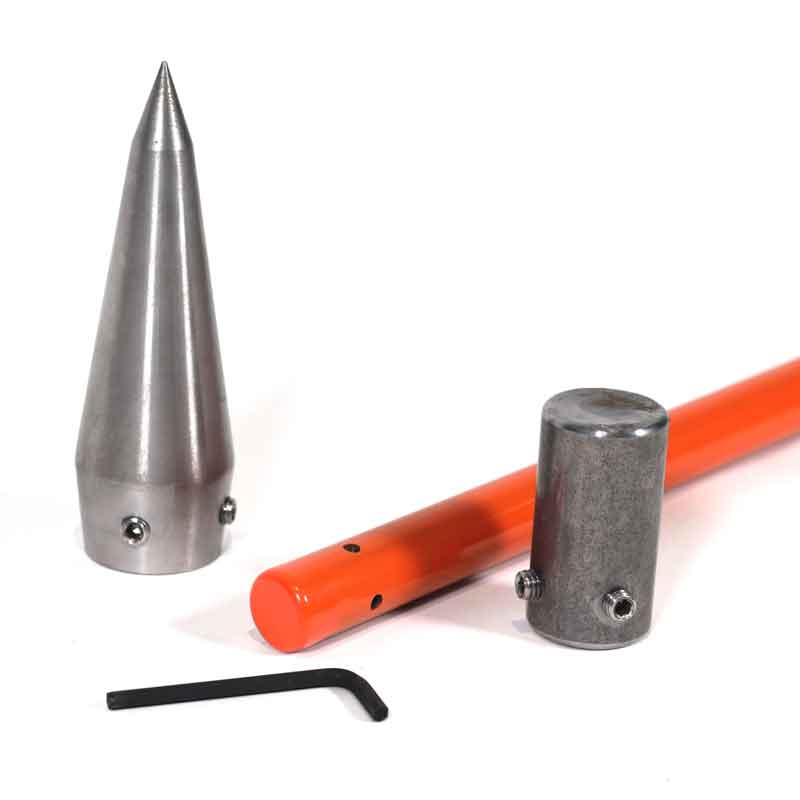
Introduction
In the realm of home improvement and construction, venturing beneath the surface often presents a challenge, particularly when it comes to installing underground utilities, irrigation systems, or drainage pipes. Traditional excavation methods, involving extensive digging and trenching, can disrupt landscapes, damage existing infrastructure, and generate significant labor costs. Fortunately, a solution lies in the form of driveway boring tool rentals, empowering DIY enthusiasts and professional contractors alike to navigate underground installations with precision, efficiency, and minimal disruption.
Understanding Driveway Boring Tool Rentals
Driveway boring tool rentals, also known as underground piercing tools, are specialized equipment designed to create clean, straight bore holes beneath driveways, sidewalks, and other hardscapes. These tools utilize various power sources, including pneumatic, hydraulic, and electric motors, to drive a cutting head through the soil, leaving behind a smooth, compact passage for the installation of pipes, cables, or conduits.
Driveway boring tools come in a variety of sizes and capacities, catering to projects ranging from simple utility line installations to complex landscaping and drainage systems. The size of the tool is determined by the diameter of the bore hole required, while its capacity dictates the length and depth of the bore it can effectively create.
Applications of Driveway Boring Tools
The versatility of driveway boring tools extends beyond mere pipe installation. Their ability to create precise, underground pathways makes them ideal for a wide range of applications, including:
-
Installing utility lines: Electricity, gas, water, and telecommunications lines can be seamlessly routed underground without disturbing existing landscaping or hardscapes.
-
Laying irrigation or drainage pipes: Efficient irrigation systems and drainage solutions can be established beneath the surface, ensuring optimal water distribution and preventing waterlogging.
-
Creating pathways for fencing or landscaping: Driveway boring tools can precisely cut paths for fence posts, landscaping elements, or decorative features, minimizing disruption to the surrounding landscape.
-
Establishing conduit for cable or fiber optic lines: Cable and fiber optic lines can be securely installed underground, providing reliable connectivity for homes and businesses.
Advantages of Using Driveway Boring Tools
Driveway boring tools offer a multitude of advantages over traditional excavation methods, making them a preferred choice for both DIY enthusiasts and professional contractors:
-
Minimized Landscape Disruption: Driveway boring tools create targeted bore holes, leaving the surrounding landscape virtually undisturbed. This is particularly beneficial in areas with mature landscaping, delicate plants, or intricate hardscapes.
-
Reduced Excavation Material: Compared to traditional excavation, driveway boring tools generate significantly less excavated material. This not only saves on labor costs for disposal but also minimizes the environmental impact of the project.
-
Protection of Underground Utilities: The precise drilling action of driveway boring tools minimizes the risk of damaging existing underground utilities, such as gas lines, water pipes, or electrical cables.
-
Clean and Professional Appearance: The resulting bore holes create a clean and professional-looking finish, eliminating the unsightly scars left behind by traditional excavation methods.

Choosing the Right Driveway Boring Tool
Selecting the appropriate driveway boring tool for a specific project is crucial for ensuring efficient and successful completion. Here’s a step-by-step guide to making an informed choice:
-
Assess Project Requirements: Determine the diameter and length of the bore hole required to accommodate the pipes or cables being installed.
-
Consider Soil Conditions: Evaluate the soil type and hardness, as different soils may require specific cutting heads or tool settings.
-
Evaluate Power Source Availability: Consider the availability of a power source, whether pneumatic, hydraulic, or electric, to match the tool’s requirements.
-
Choose a Tool with Adequate Capacity: Select a tool with sufficient power and capacity to handle the project’s length and depth requirements.
-
Prioritize Safety Features: Opt for a tool equipped with safety features such as overload protection, emergency stop mechanisms, and proper guards.
Driveway Boring Tool Rental Process
Renting a driveway boring tool involves a straightforward process to ensure a smooth and successful project:
-
Research and Select a Reputable Rental Company: Choose a reputable rental company with a history of providing well-maintained equipment and knowledgeable staff.
-
Reserve the Desired Tool and Accessories: Reserve the desired tool and any necessary accessories, such as cutting heads, extension shafts, and safety gear.
-
Inspect the Tool: Before accepting the tool, thoroughly inspect it for any signs of damage or malfunction.
-
Complete Paperwork and Deposit: Complete the necessary rental paperwork and provide a security deposit.
-
Receive Operational Instructions: Obtain thorough instructions on the safe operation and maintenance of the tool from the rental company’s staff.
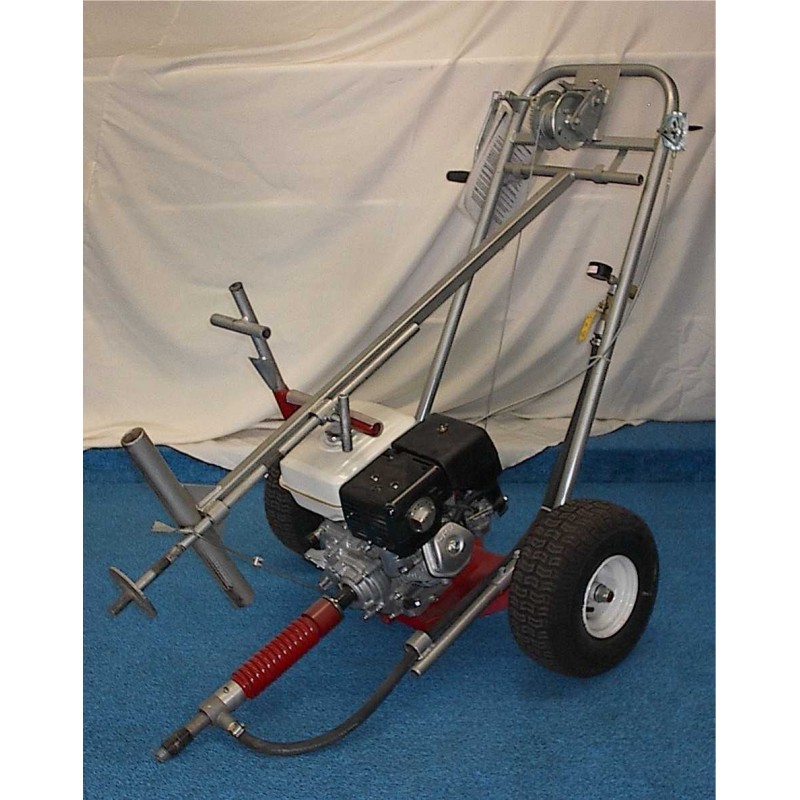
Operating a Driveway Boring Tool Safely
Safety should always be the top priority when operating a driveway boring tool. Follow these guidelines to minimize risks:
-
Wear Appropriate PPE: Equip yourself with personal protective equipment (PPE) including safety glasses, gloves, and hearing protection. Safety glasses shield your eyes from flying debris, gloves safeguard your hands from cuts and abrasions, and hearing protection minimizes noise exposure during operation.
-
Ensure a Stable Work Area: Choose a level and stable work area to prevent the tool from tipping or losing control. Clear the surrounding area of obstacles and ensure a secure footing.
-
Follow Manufacturer’s Instructions: Carefully read and adhere to the manufacturer’s instructions for the specific tool being rented. This includes understanding proper operation techniques, recommended cutting depths, and safety precautions.
-
Avoid Overloading the Tool: Don’t push the tool beyond its capacity by forcing it through overly hard soil or attempting to drill excessive lengths in one go. Take breaks and allow the tool to cool down to prevent overheating and potential damage.
-
Be Aware of Underground Utilities: Before starting any excavation project, contact your local utility companies to mark the location of underground lines. This helps to avoid accidental damage to gas lines, water pipes, or electrical cables.
-
Exercise Caution with Obstacles: If you encounter unexpected obstacles during boring, such as rocks or roots, stop immediately. Assess the situation and consult the manufacturer’s instructions or seek assistance from a professional if needed.
-
Never Operate Under the Influence: Operating a driveway boring tool while under the influence of alcohol or drugs is extremely dangerous. Always maintain a clear and focused mind to ensure safe and proper operation.
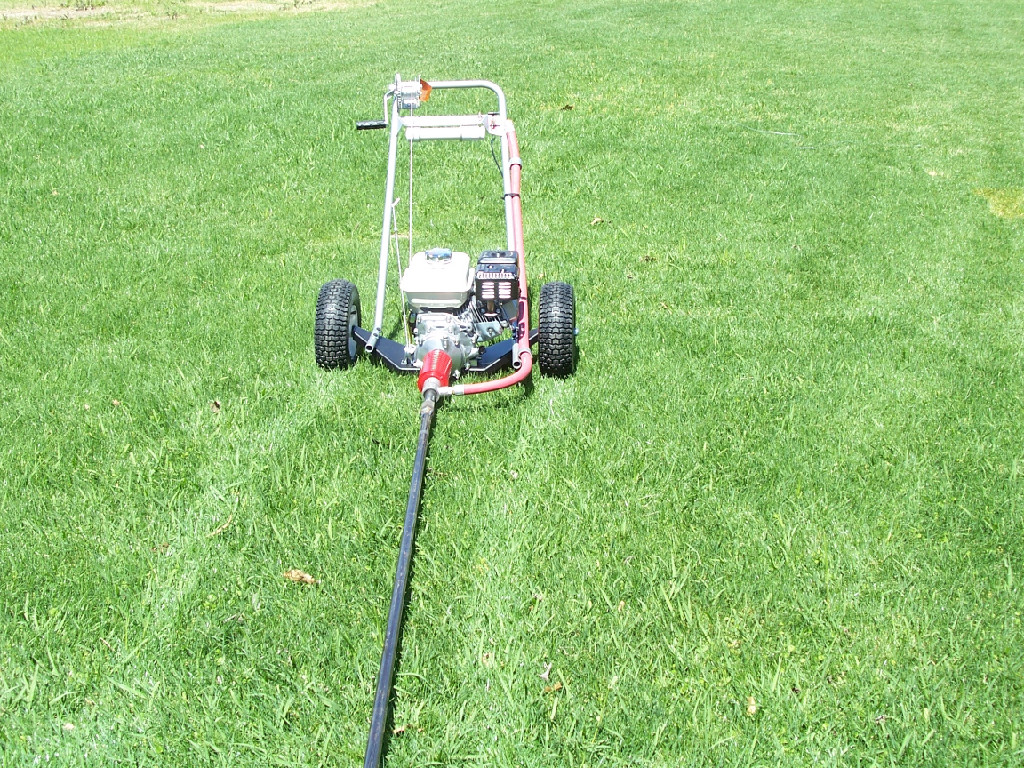
Maintaining a Driveway Boring Tool for Optimal Performance
Proper maintenance of a rented driveway boring tool ensures optimal performance and minimizes the risk of malfunctions during your project. Here are some key maintenance tips:
-
Keep the Tool Clean: Regularly remove dirt, debris, and mud buildup from the tool’s exterior and cutting head. This prevents clogging and ensures smooth operation.
-
Lubricate Moving Parts: Consult the manufacturer’s manual and lubricate all moving parts according to the recommended schedule. This reduces friction and wear and tear on the tool’s components.
-
Inspect for Damage: Before each use, thoroughly inspect the tool for any signs of damage, such as loose bolts, worn cutting bits, or leaking hoses. Address any issues promptly to avoid operational problems.
-
Store Properly: When not in use, store the tool in a dry and secure location. Protect it from extreme temperatures, moisture, and dust to ensure it’s in optimal condition for the next project.
Troubleshooting Common Driveway Boring Tool Issues
Even with proper care, minor issues can arise during operation. Here’s how to address some common driveway boring tool problems:
- The tool isn’t cutting through the soil:
- Check for dull or damaged cutting bits. Consider replacing them with sharpened or new ones.
- Adjust the cutting depth according to the soil conditions and project requirements.
- Ensure the tool is properly aligned and not encountering any obstructions within the bore hole.
- The tool is overheating:
- Allow the tool to cool down before resuming operation. Avoid continuous use for extended periods.
- Check for proper lubrication of moving parts as excessive friction can lead to overheating.
- If overheating persists, consult the manufacturer’s instructions or contact the rental company for assistance.
- The tool is making strange noises:
- Identify the source of the noise. Loose components may cause rattling or clunking sounds.
- Consult the manufacturer’s manual for troubleshooting steps based on the specific noise.
- If the noise persists or indicates a more serious issue, stop using the tool and seek professional help.
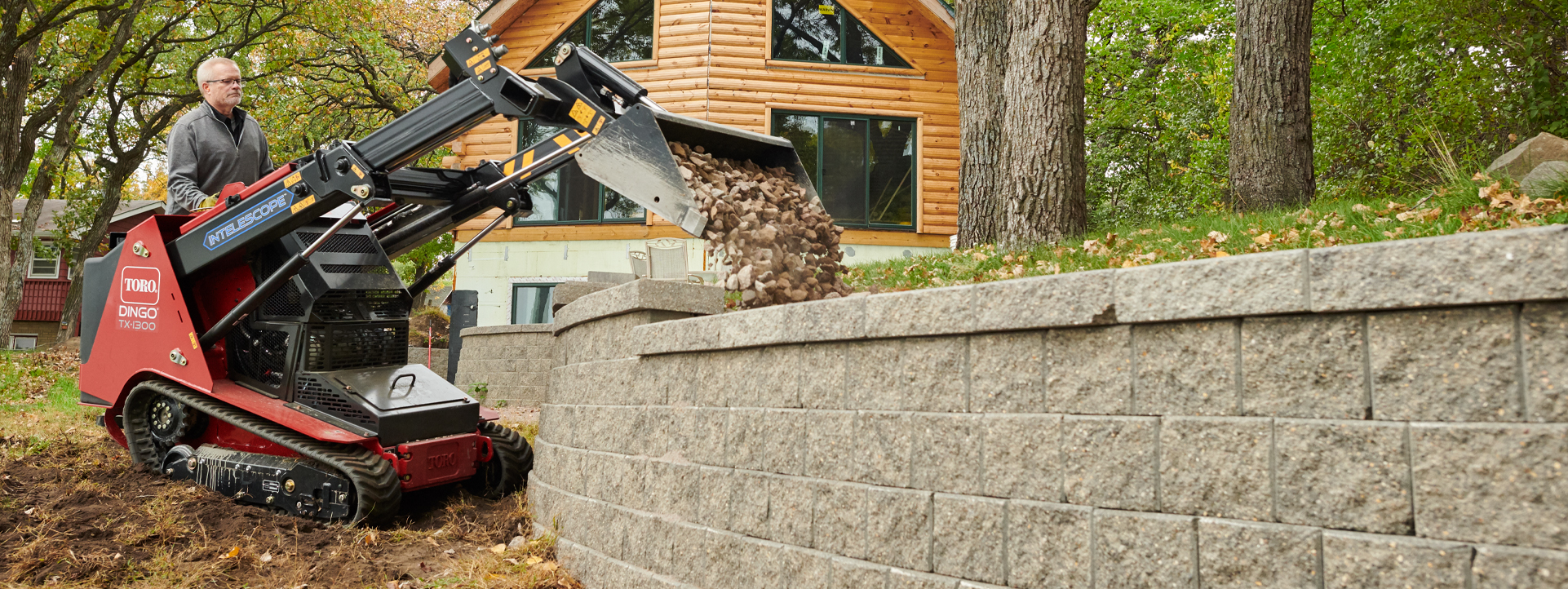
Conclusion
Driveway boring tool rentals offer a valuable solution for navigating underground installations with efficiency and minimal disruption. By understanding the applications, benefits, and proper usage of these tools, DIY enthusiasts and professionals alike can tackle various projects from utility line installations to intricate drainage systems. Remember, prioritizing safety, selecting the appropriate tool, and maintaining proper equipment operation are paramount for a successful outcome. So, the next time your project demands venturing beneath the surface, consider the illuminating path offered by driveway boring tool rentals.
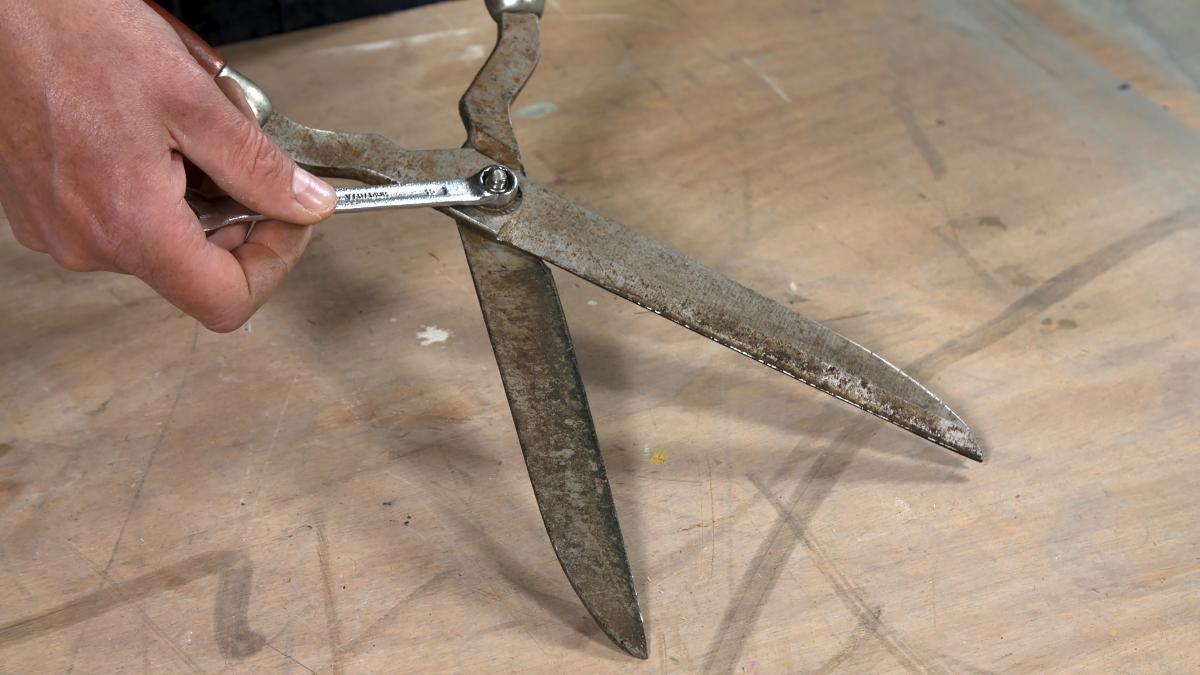
How to sharpen garden tools
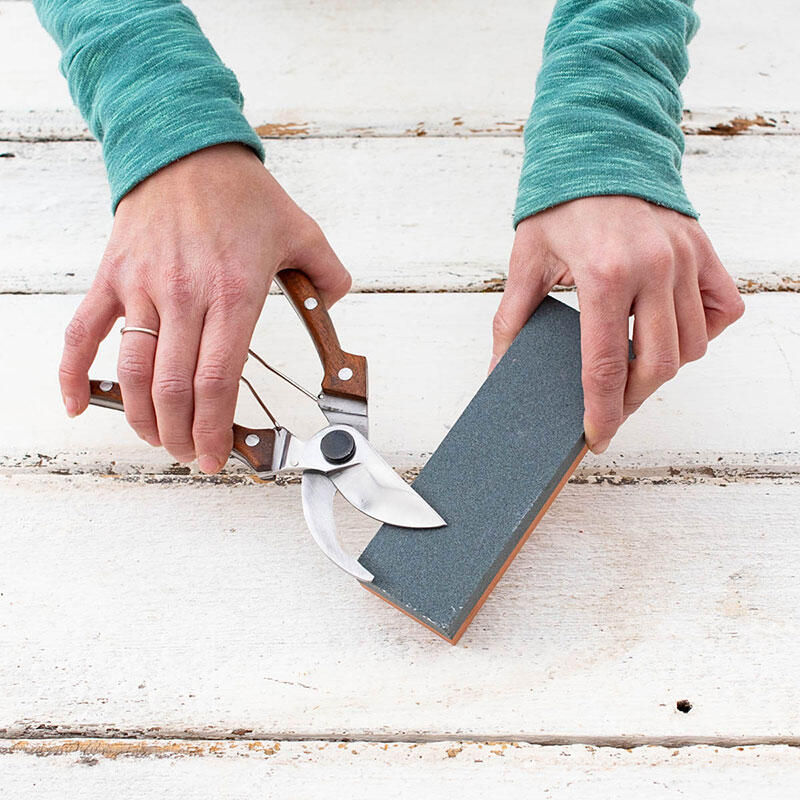
In the realm of gardening, sharp tools are not just a luxury but a necessity. A dull hoe will struggle to break through hard soil, while a blunt pruner will leave ragged cuts on your plants. Sharpening your garden tools regularly will not only make your gardening tasks easier and more enjoyable but also extend the lifespan of your tools and prevent them from becoming damaged.
Understanding the Importance of Sharp Tools
Sharp garden tools offer several benefits:
-
Improved Efficiency: Sharp tools cut through soil and plant material with ease, reducing the effort required and saving you time and energy.
-
Cleaner Cuts: Sharp blades make precise cuts, minimizing damage to plants and promoting healthy growth.
-
Reduced Wear and Tear: Dull tools require more force to operate, putting increased strain on both the tool and the user, leading to premature wear and tear.
-
Safety: Sharp tools are less likely to slip or cause accidents, ensuring a safer gardening experience.
Identifying Dull Tools
Knowing when your garden tools need sharpening is crucial for maintaining their effectiveness and preventing damage. Here are some signs of dull tools:
-
Increased Effort: If you find yourself exerting more force than usual to use your tools, it’s likely they need sharpening.
-
Ragged Cuts: Dull blades will leave ragged, uneven cuts on plants, hindering their growth and potentially causing damage.
-
Pulling or Tearing: Instead of slicing cleanly through material, dull tools may pull or tear, causing damage to plants and soil.
-
Uneven Wear: Dull blades tend to wear unevenly, leading to an unbalanced tool that is difficult to control.
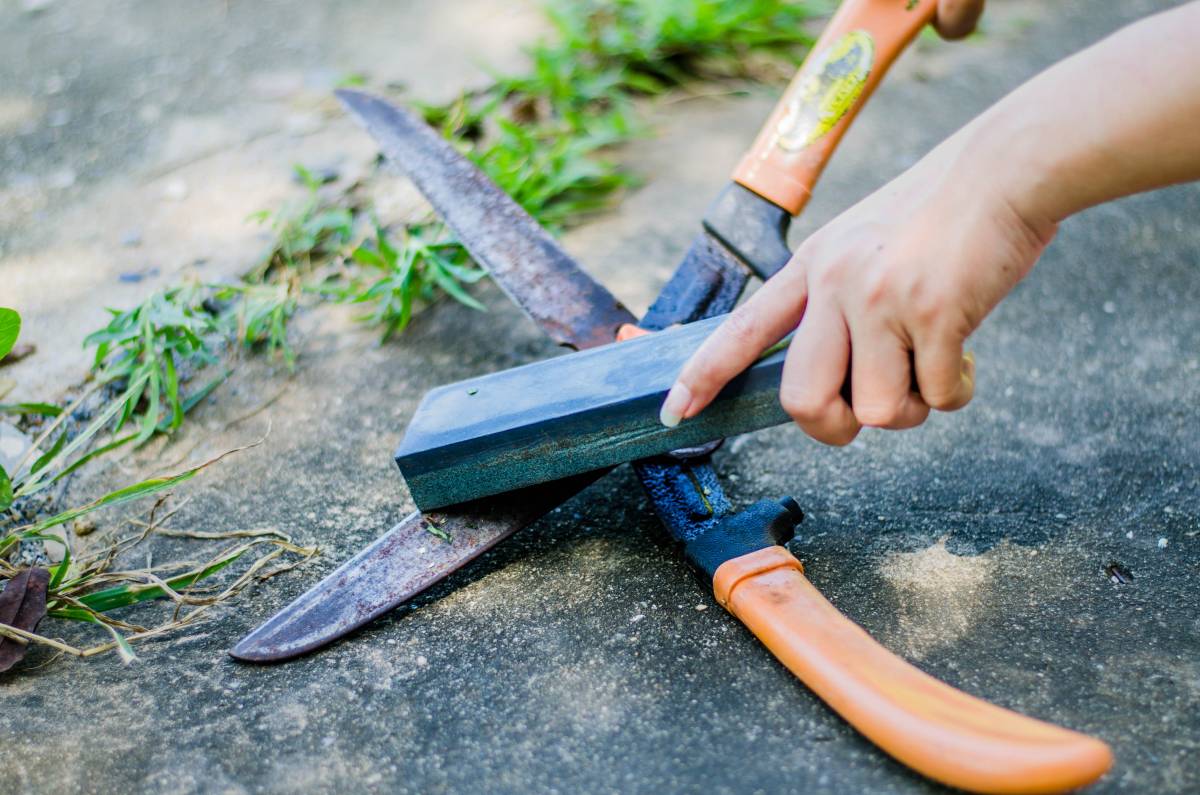
Sharpening Techniques: A Toolbox of Options
Various sharpening techniques can be employed to restore your garden tools to their former sharpness. The most suitable method depends on the type of tool and the severity of the dullness.
-
File Sharpening: A file is a versatile tool for sharpening various types of garden tools, including hoes, spades, and pruners. Choose a file with the appropriate grit for the tool and angle it correctly to achieve a sharp edge.
-
Whetstone Sharpening: A whetstone, also known as a sharpening stone, offers a finer sharpening method, particularly for pruners and other tools with delicate blades. Use a water or oil-based whetstone and follow a consistent sharpening motion.
-
Sharpening Tools: Specialized sharpening tools, such as sharpening wheels or motorized sharpeners, can provide quick and efficient sharpening for certain tools, such as lawnmower blades.
Sharpening Specific Tools: A Targeted Approach
Different garden tools require specific sharpening techniques:
-
Hoes and Spades: Sharpen the bevel, the angled edge of the blade, using a file or whetstone. Maintain a consistent angle throughout the sharpening process.
-
Pruners: Use a whetstone to sharpen the inner and outer edges of the blade, maintaining the original angle. Avoid over-sharpening, as this can weaken the blade.
-
Lawn Mower Blades: Specialized sharpening tools or professional sharpening services are recommended for lawn mower blades.
Safety Precautions: Protecting Yourself and Your Tools
Sharpening garden tools involves potential hazards, so safety precautions are essential:
-
Wear Protective Gear: Use safety glasses and gloves to protect your eyes and hands from sparks, metal shavings, and sharp edges.
-
Secure the Tool: Properly clamp or hold the tool in place to prevent it from slipping during sharpening.
-
Maintain Proper Angle: Use the correct sharpening angle for the tool to ensure a sharp and effective edge.
-
Avoid Over-Sharpening: Excessive sharpening can weaken the blade and make it more prone to breakage.

Sharpening Frequency: A Schedule for Sharpness
The frequency of sharpening depends on the type of tool and the intensity of its use. A general guideline is to sharpen:
-
Hoes and Spades: After each use or at least once a month during peak gardening seasons.
-
Pruners: Before each use, especially for delicate tasks like pruning flowers or shrubs.
-
Lawn Mower Blades: Once a season or after several hours of mowing.
Conclusion: A Sharp Edge for a Greener Garden
Regularly sharpening your garden tools is an investment in both your gardening efficiency and the health of your plants. By following the appropriate sharpening techniques and safety precautions, you can keep your tools sharp, extend their lifespan, and enjoy a more rewarding gardening experience. Remember, a sharp edge makes all the difference in a greener, more productive garden.
Additional Tips for Sharpening Garden Tools:
-
Start with a clean tool: Before sharpening, clean the tool to remove dirt, debris, and rust.
-
Use light, even strokes: Avoid applying too much pressure when sharpening, as this can damage the blade.
-
Maintain a consistent angle:* Consistency is key for creating a sharp and even edge.
-
Feel for the burr: As you sharpen, a fine metal burr will form on the opposite side of the sharpened edge. This can be removed with a few light strokes on a flat file.
-
Sharpening stones require lubrication: Water-based whetstones require lubrication with water, while oil-based stones require oil.
-
Practice makes perfect: Sharpening takes practice. Don’t be discouraged if it takes a few tries to achieve a sharp edge.
-
Consider professional sharpening: For complex tools or those requiring a very fine edge, professional sharpening services are a good option.
Storing Sharpened Tools: Maintaining the Edge
Once your tools are sharpened, proper storage practices are crucial to maintaining their sharpness:
-
Clean and dry tools: After each use, clean and dry your tools thoroughly before storing them. Moisture can contribute to rust and dulling.
-
Oil metal surfaces: Apply a light coat of oil to metal surfaces to prevent rust and corrosion.
-
Store tools properly: Hang tools on a rack or store them in a dry, well-ventilated place. Avoid storing them in damp sheds or garages.

Conclusion: A Sharper Garden Awaits
By incorporating a regular sharpening routine into your gardening practices, you’ll be rewarded with a set of tools that perform flawlessly. Sharp tools will make your gardening tasks easier and more enjoyable, while also promoting the health and growth of your plants. Remember, a sharp edge is the key to unlocking a more efficient and rewarding gardening experience. So, embrace the art of sharpening, and watch your garden flourish under the touch of finely honed tools!
-

How to get rust off tools

In the realm of DIY projects, home repairs, and outdoor adventures, tools stand as faithful companions, enabling us to tackle tasks with precision and efficiency. However, these trusty implements are not immune to the passage of time and the relentless grip of corrosion. Rust, the bane of metalwork, can gradually transform once-gleaming tools into dull, unsightly objects, hindering their performance and reducing their lifespan.
Fear not, fellow tool enthusiasts, for there exists an arsenal of effective methods to combat rust and restore your tools to their former glory. This comprehensive guide will delve into the world of rust removal, equipping you with the knowledge and techniques to reclaim your tools from corrosion’s clutches.
Understanding Rust: The Enemy at the Gates
Before embarking on the rust removal crusade, it’s crucial to grasp the nature of the adversary we face. Rust, scientifically known as iron oxide, is a reddish-brown compound that forms when iron or steel comes into contact with oxygen and moisture. This electrochemical process, known as oxidation, gradually consumes the metal, leading to its deterioration and loss of structural integrity.
The Rust Removal Arsenal: Mechanical, Chemical, and Electrolytic Methods
To combat rust effectively, we must employ a diverse range of strategies, each tailored to the specific task at hand. Let’s explore the three main categories of rust removal methods:
-
Mechanical Methods: When direct physical action is required, mechanical methods come to the fore. Wire brushes, with their bristly abrasives, excel at removing loose rust and surface corrosion. Sanding, using sandpaper of varying grits, provides a finer approach, smoothing out rough surfaces and removing stubborn rust patches. For heavy-duty rust removal, abrasive blasting techniques, such as sandblasting or bead blasting, employ pressurized streams of abrasive particles to blast away rust and restore the underlying metal.
-
Chemical Methods: For rust that has penetrated deeper into the metal, chemical methods offer a more potent solution. Vinegar, a common household staple, proves surprisingly effective against rust. Simply soak the rusted tool in a vinegar solution for several hours, and the acidic properties of vinegar will dissolve the rust. Baking soda, another versatile kitchen ingredient, can be formed into a paste and applied to the rusted area, neutralizing the rust and facilitating its removal. Commercial rust removers, available in various forms, offer a more concentrated approach, often containing powerful chemicals that break down rust bonds.
-
Electrolytic Methods: When dealing with stubborn rust that resists other methods, electrolytic methods harness the power of electricity to extract rust from the metal. In saltwater electrolysis, the rusted tool is submerged in a saltwater solution and connected to the negative electrode of a battery. The positive electrode is attached to a scrap piece of metal. As electricity flows, the rust ions are attracted to the positive electrode, transferring from the tool to the scrap metal. Baking soda electrolysis follows a similar principle, using a baking soda solution instead of saltwater.

Choosing the Right Weapon for the Rust Battle
The choice of rust removal method depends on several factors:
-
Severity of Rust: For light rust, mechanical methods like wire brushing or sanding may suffice. For heavier rust, chemical or electrolytic methods are often necessary.
-
Tool Type: Delicate tools may require gentler methods like vinegar or baking soda to avoid damage. For sturdier tools, harsher methods like abrasive blasting or commercial rust removers can be employed.
-
Safety Considerations: Always prioritize safety when working with rust removers. Wear protective gloves and eye gear, ensure adequate ventilation, and avoid skin contact with chemicals.
Preparing the Tool for Rust Removal: A Precursor to Success
Before applying any rust removal method, proper preparation is essential:
-
Cleaning: Begin by cleaning the tool to remove dirt, grease, and loose debris. This will allow the rust removal method to work more effectively.
-
Loose Rust Removal: Use a wire brush or sandpaper to remove loose rust flakes, exposing the underlying metal.
-
Protecting the Surroundings: Cover any surrounding surfaces with plastic or drop cloths to prevent damage from rust removers or abrasive particles.
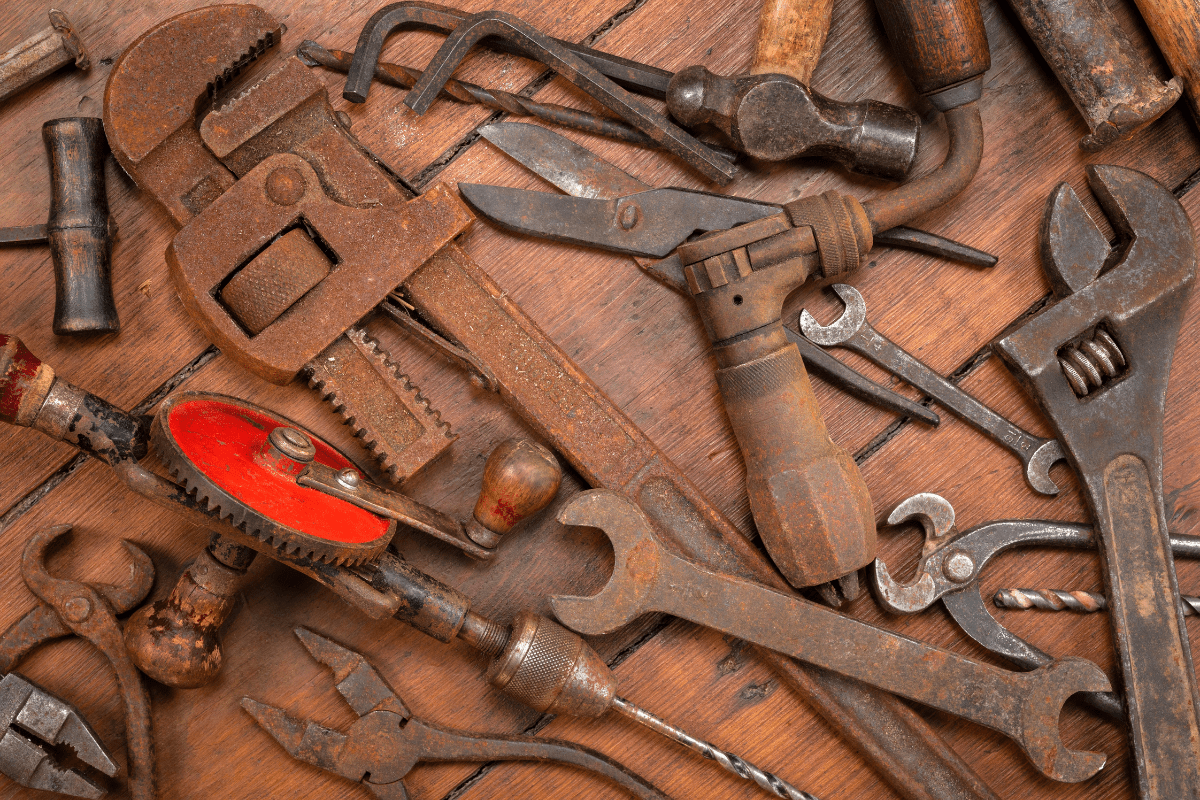
Applying the Rust Removal Method: A Tactical Approach
With the tool prepared, it’s time to apply the chosen rust removal method:
-
Mechanical Methods: For wire brushing, use a brush with appropriate stiffness for the task. For sanding, start with a coarse grit and gradually progress to finer grits. For abrasive blasting, follow the instructions for the specific equipment.
-
Chemical Methods: For vinegar, soak the tool in a solution of white vinegar and water for several hours. For baking soda, apply the paste to the rust and let it sit for several hours. For commercial rust removers, follow the product instructions carefully.
-
Electrolytic Methods: For saltwater electrolysis, submerge the tool in a saltwater solution and connect it to the negative electrode of a battery. Connect the positive electrode to a scrap of metal. For baking soda electrolysis, follow the same procedure but use a baking soda solution instead of saltwater.

Neutralizing the Foe and Protecting Your Tools from Future Onslaught
Once the rust has been removed, it’s crucial to neutralize any remaining rust remover and prevent rust from returning:
-
Neutralization: Rinse the tool thoroughly with clean water to remove any residual rust remover. Baking soda can be used to neutralize any remaining acidic traces.
-
Drying: Dry the tool completely with a clean cloth to prevent further corrosion. Moisture is a key ingredient in the rust formation process.
-
Prevention: Apply a protective coating to the tool, such as oil, wax, or a rust-inhibiting spray. This will create a barrier against moisture and oxygen, hindering future rust development.
-
Storage: Store your tools in a dry, well-ventilated place to minimize exposure to moisture. A dehumidifier can be helpful in particularly humid environments.
Safety First: A Shield Against Chemical Hazards
Rust removal methods, particularly those involving chemicals, necessitate prioritizing safety:
-
Protective Gear: Always wear gloves and eye protection to shield yourself from contact with chemicals or flying debris.
-
Ventilation: Ensure adequate ventilation when using chemical rust removers. Open windows and doors or work in a well-ventilated area.
-
Chemical Handling: Avoid contact with skin and eyes. If contact occurs, flush the affected area with clean water immediately and seek medical attention if necessary.
-
Disposal: Dispose of used chemicals and rust particles responsibly, following local regulations. Never pour chemicals down the drain.
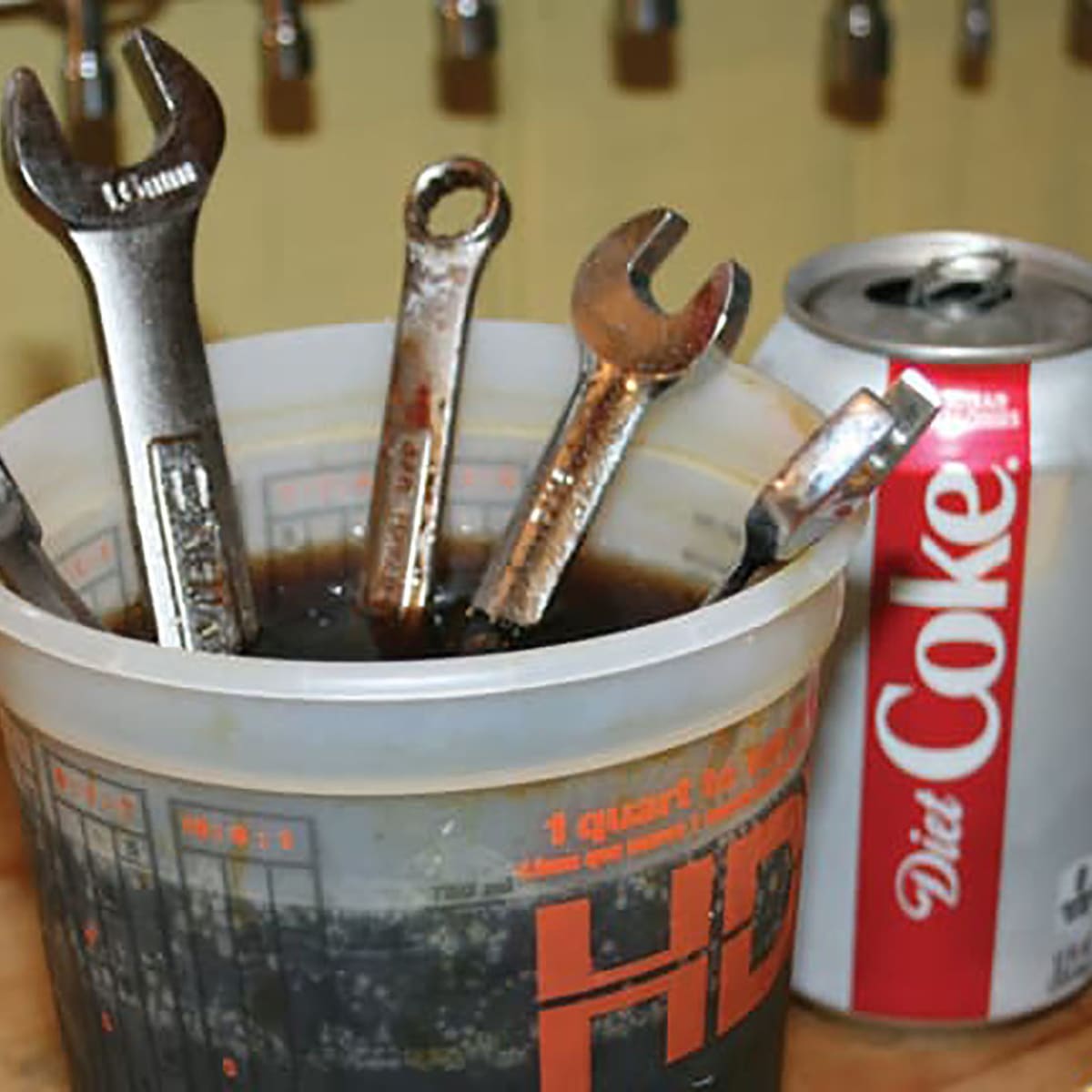
Conclusion: A Gleaming Arsenal Awaits
By understanding the nature of rust, employing the appropriate removal methods, and prioritizing safety, you can effectively reclaim your tools from the clutches of corrosion. With a clean, rust-free arsenal at your disposal, you can tackle any DIY project or home repair with renewed confidence. Remember, proper maintenance and storage practices are crucial in preventing rust from returning, ensuring your tools remain reliable companions for years to come.
-